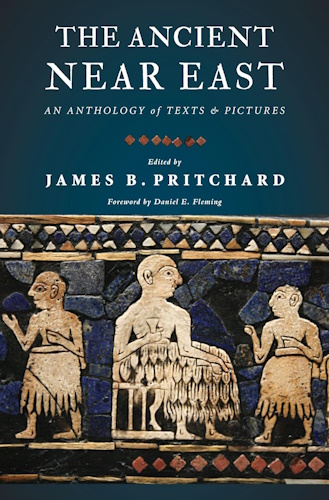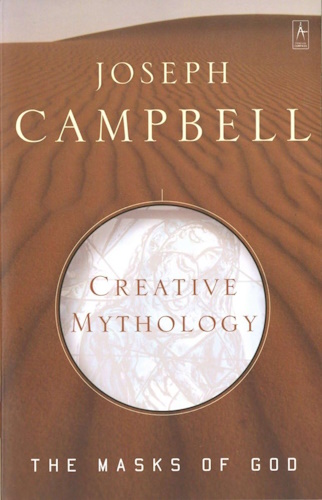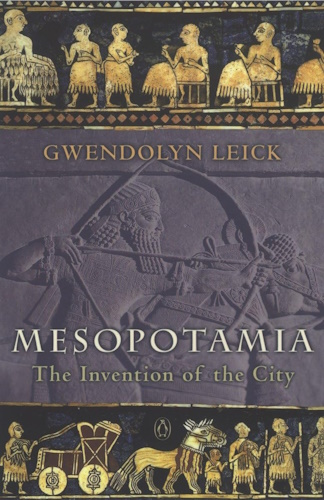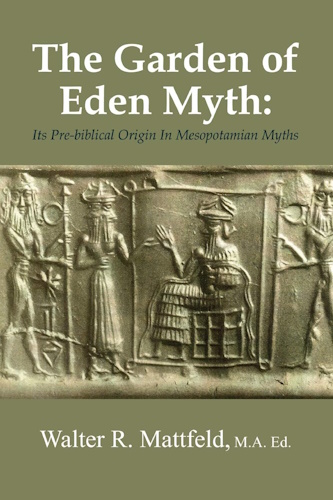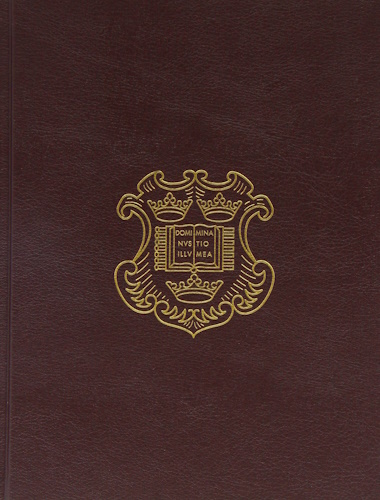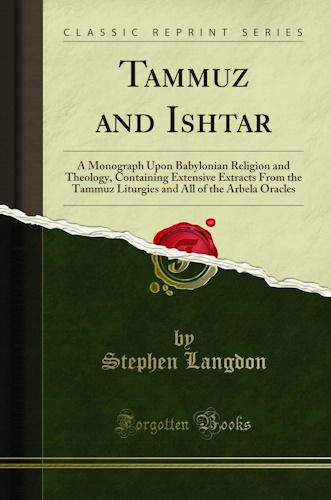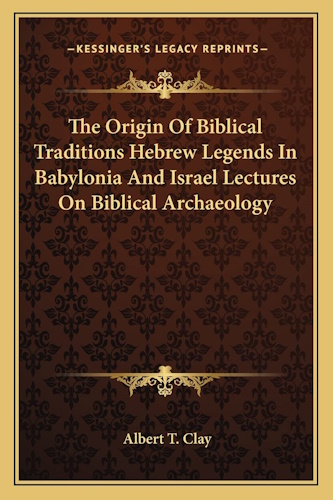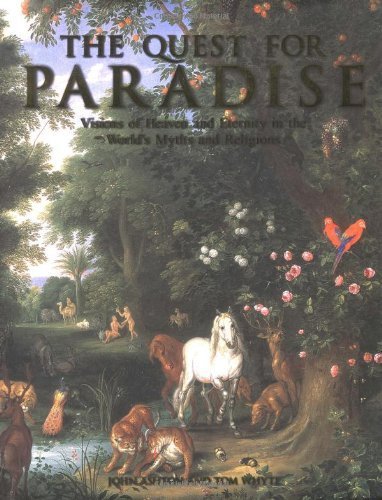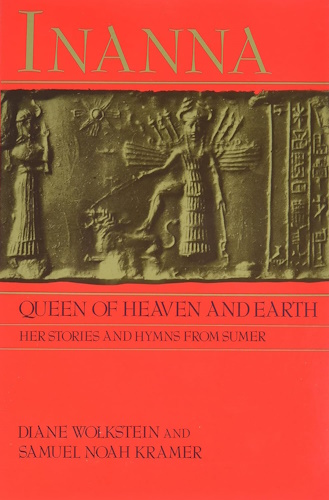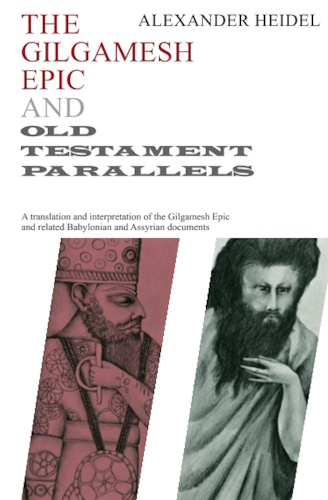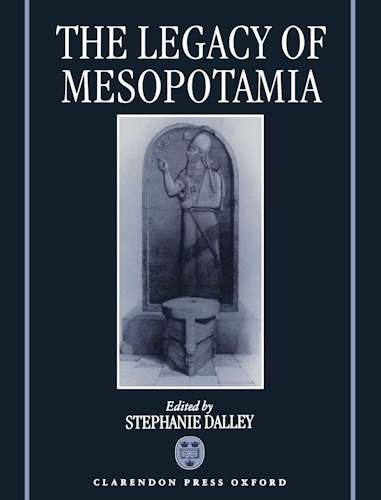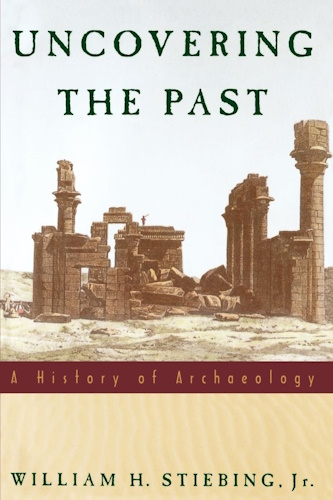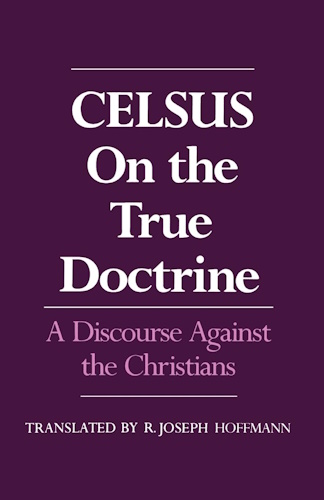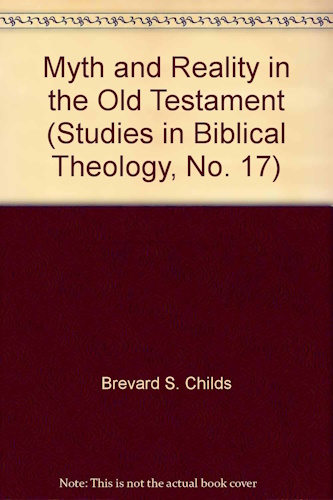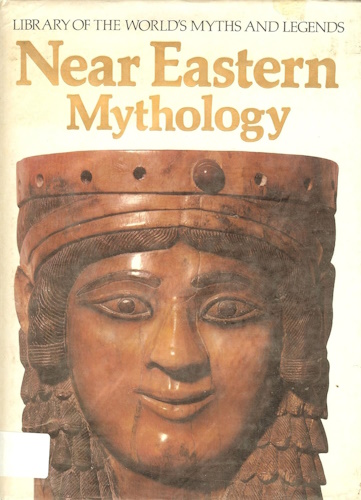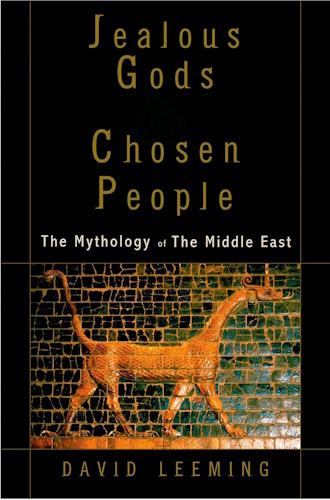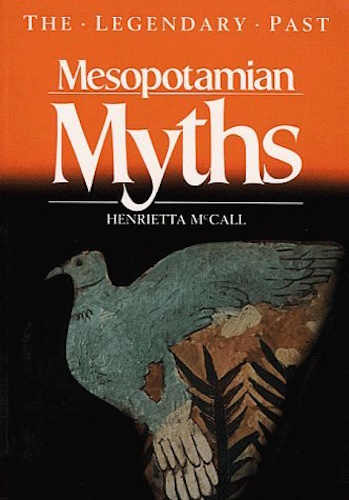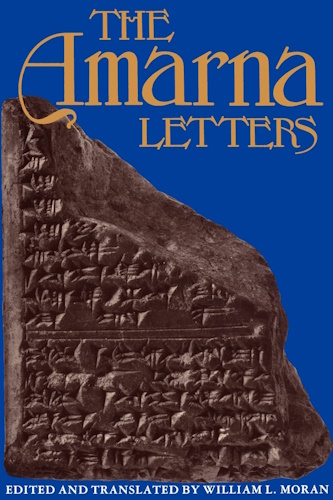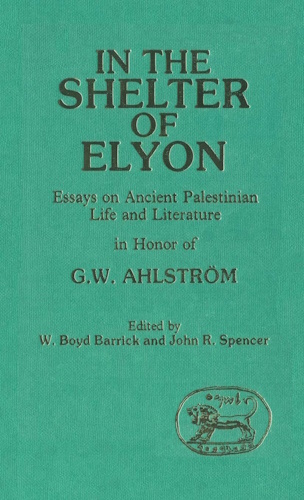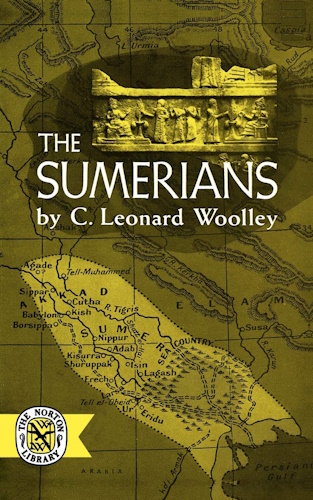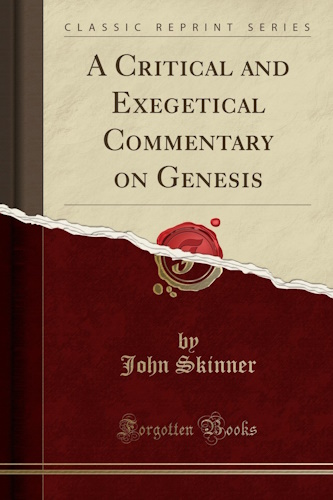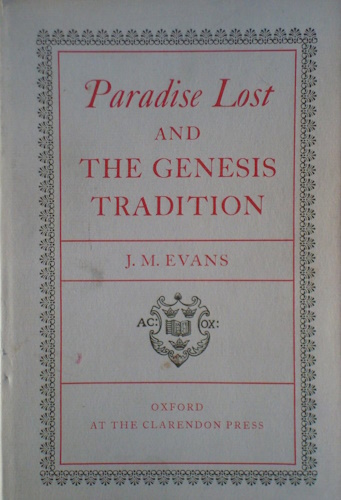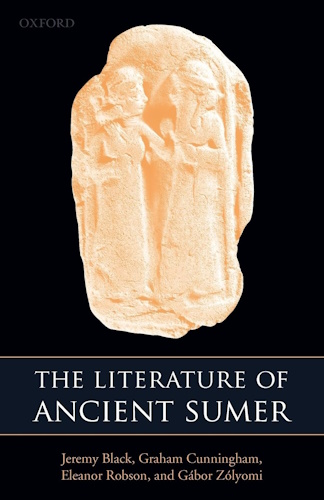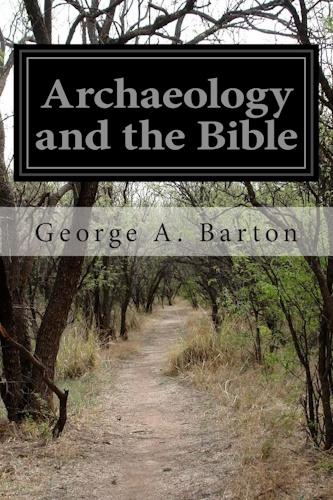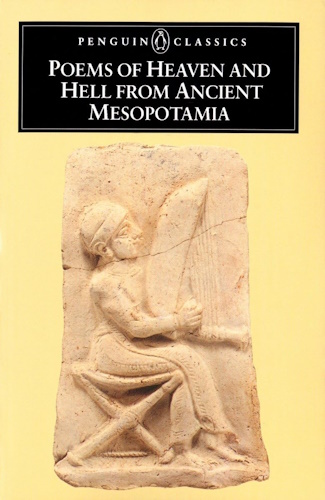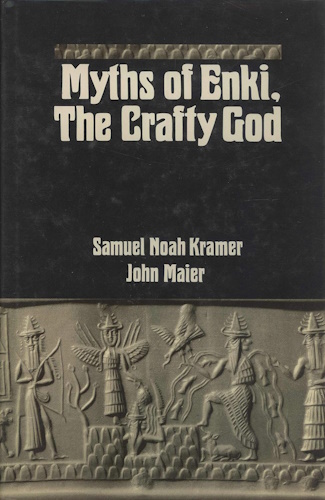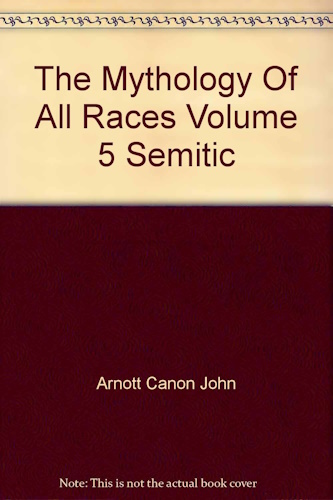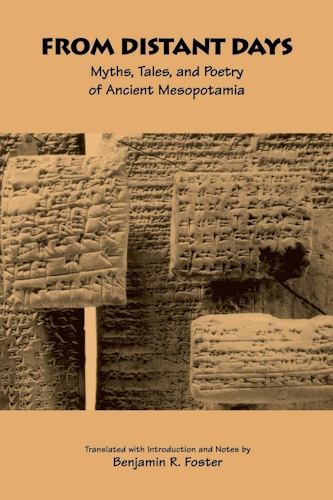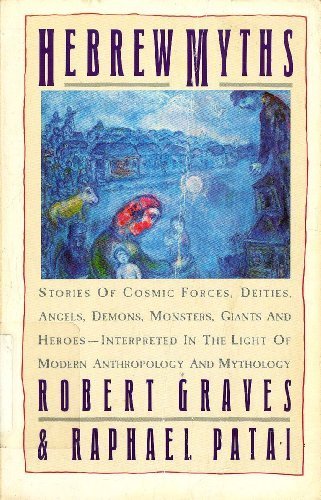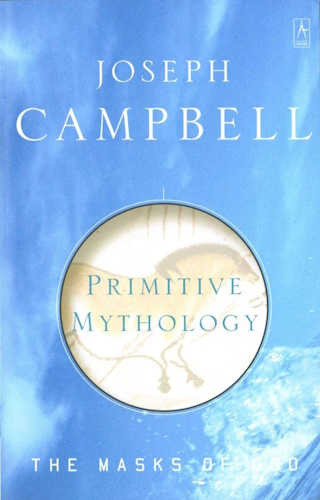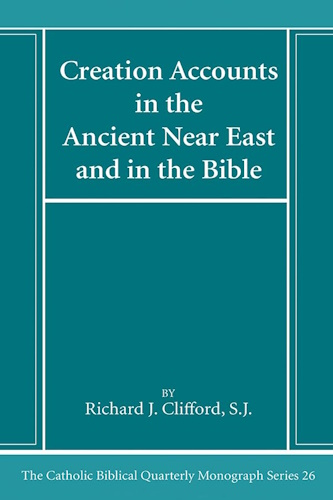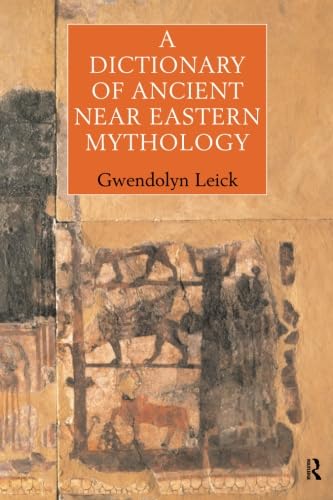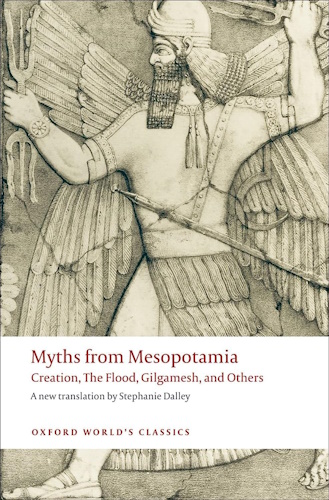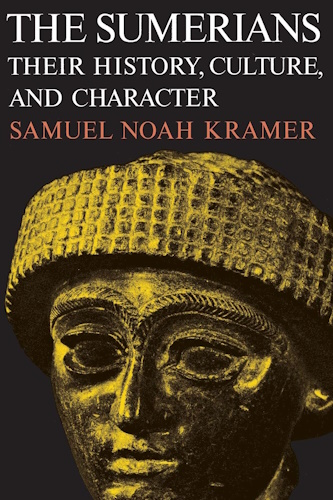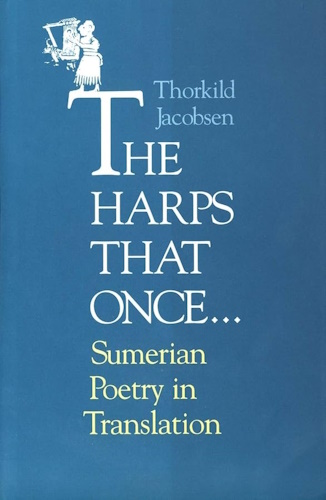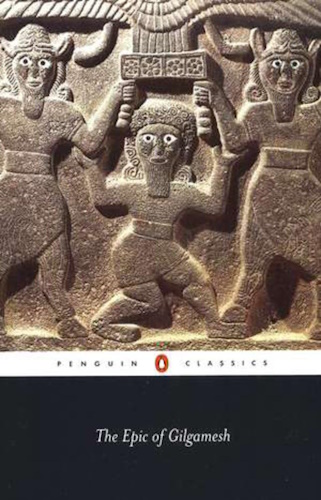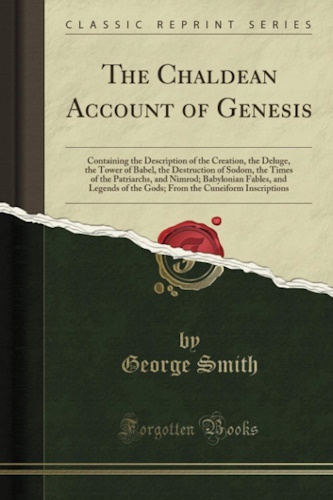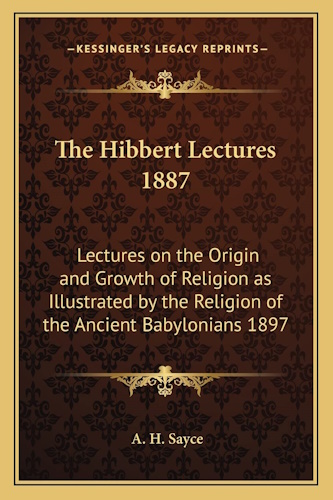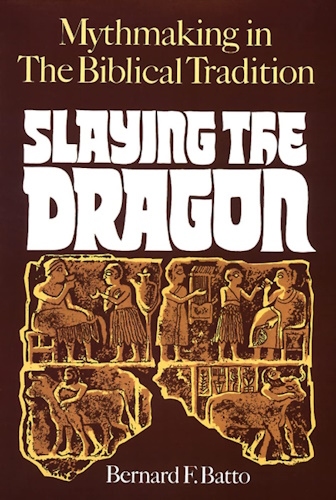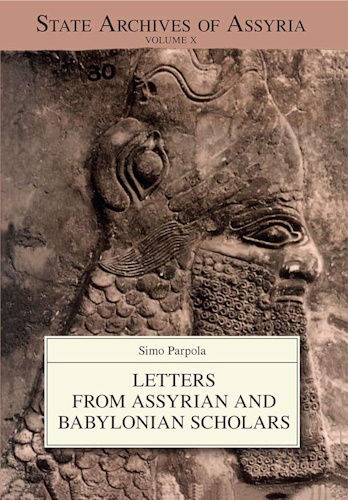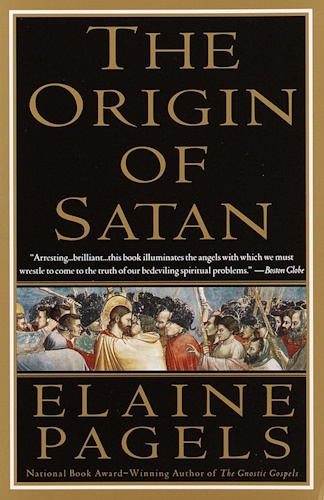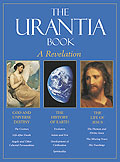![]()
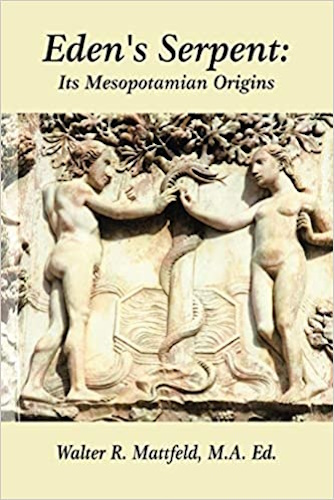
Bible Origins
The Serpent
Who Walked and Talked
in the Garden of Eden
Part Two
by
Walter Reinhold Warttig Mattfeld y d la Torre, M.A. Ed.
e-mail contact
18 December 2000
Revisions through: 24 May 2009
![]()
Pictures of the Serpent or Snake who WALKED and TALKED in the Garden of Eden
A later Hebrew recasting of the Mesopotamian gods who bore the Sumerian epithet ushumgal "great serpent" or "dragon":
An/Anu, Ningishzida/Gishzida, Dumuzi/Tammuz, Inanna/Ishtar, Enlil/Ellil, Enki/Ea and Marduk/Merodach
Part Two
Part One
Please click here for my latest article (06 Nov. 2008) titled "A brief history of the Academic search (1859-2009) for the pre-biblical origins of the Serpent in the Garden of Eden from parallels appearing in Ancient Near Eastern Myths."
Please click the title to buy my book Eden's Serpent: Its Mesopotamian Origins
Mari (1908) thought that motifs associated with the god Anu appearing in the Adapa and the Southwind myth had been reworked and ascribed to Eden's Serpent, I agree, "somewhat" (I understand behind Eden's serpent are Ea, Anu, Gishzida, Dumuzi, and in other myths Enki and Enlil):
"The Babylonian myth which comes nearest...to the biblical story of the Fall, is the legend of Adapa." (p. 168. Francesco Mari, Doctor of Divinity. "Assyro-Babylonian Elements in the Biblical Account of the Fall." pp. 163-180. Vol. 3. The New York Review a Journal published by St. Joseph's Seminary, Yonkers, New York. 1908)
"In the myth of Adapa we find, mutatis mutandis, several elements which appear also in the narrative of Genesis...For the most part Anu seems to enact the role of the biblical serpent. Thus after the manner of the serpent addressing Eve, he says to Adapa "Why dost thou not eat and drink?" Adapa replies, alleging like Eve the prohibition of Ea. (pp. 171-172. Mari)
"Just as Yahweh had said that the eating of the forbidden fruit would be followed by death, so also Ea had warned Adapa not to eat the proferred aliments for in reality, they were mortiferous. The serpent promises immortality, saying: "Ye shall not surely die...Ye shall be as God," (and consequently immortal), so also does Anu hold out to Adapa the promise of immortality." (p. 172. Mari)
"Loisy in comparing the legends of Adapa and the biblical narrative, considers the attribution to Yahweh of the twofold role of Ea and Anu, to be a modification entailed by the passage of the story from a polytheistic to a monotheistic setting. This hypothesis, however, does not seem necessary since the serpent could well have represented one of the two...If the serpent is conceived of as occupying the place of Anu, the correspondence is exact since he knows as well as Anu that the forbidden fruit is fatal to man, that his suggestion contains a plot born of jealousy to ruin the beautiful creation of Ea." (p. 173. Mari)
I agree with Loisy, motifs associated with Anu _and_ Ea have been reworked and ascribed to Yahweh. Mari is correct that Anu is playing the role of Eden's serpent, but he has missed or overlooked similar edenic serpent roles for Gishzida, Dumuzi and Ea.
Professor Langdon (1914) on ushum-gal (usumgal) meaning "great-serpent" (ama = "mother," anna = "heaven"):
"A title of Tammuz to be discussed below, is d.ama-ushumgal-anna, a name which means 'mother-great-serpent-heavenly'..." (p. 17. Stephen Herbert Langdon. Tammuz and Ishtar, A Monograph Upon Babylonian Religion and Theology. Oxford. Clarendon Press. 1914)
Professor Clay (1923) on ushum-gal meaning "great serpent":
"Ushum-gal "the great serpent" is frequently mentioned in connection with Tammuz..." (p. 90. Albert T. Clay. The Origin Of Biblical Traditions Hebrew Legends In Babylonia And Israel Lectures On Biblical Archaeology. delivered at the Lutheran Theological Seminary Mt. Airy, Philadelphia. New Haven. 1923. Reprinted 1999 by The Book Tree, Escondido, California)
Eden's Serpent as Marduk, Ea (Enki), and Enlil (Ellil):
Marduk (biblical Merodach) the supreme god of Babylon is portrayed as being the son of Ea of Eridu (Sumerian Enki of Eridug). In the Babylonian version of the Creation it is Marduk who orders the creation of man to be the servant of the gods to relieve the gods of toil at Babylon, delegating the task of man's creation to Ea. One of Marduk's epithets was ushumgal, meaning "great serpent" or "dragon." What is interesting here is that whereas God is responsible for the creation of man (Adam), a god bearing the epithet ushumgal, "great serpent" or "dragon" (Sumerian: ushum =serpent, gal =great) is responsible for man's creation. In Sumerian myths it is Enki (Ea) of Eridu who is responsible for creating man at Eridu to relieve the Igigi gods of the hard toil they bear in his garden in the midst of the edin, and he, like Marduk, was also called ushumgal of "great serpent dragon." At Nippur the god Enlil is responsible for man's creation to releive the Igigi gods of hard toil in his garden in the edin. He, like Marduk and Enki (Ea) also bears the epithet ushumgal, "great serpent" or "dragon." So, three different gods responsible for man's creation in Mesopotamian myths Enki (Ea), Enlil (Ellil) and Marduk (Merodach) all bore the same epithet: ushumgal, "great serpent" or "dragon." Like Eden's Serpent all of them denied man immortality and all had created man to toil in their gardens in the edin (at Eridu, Nippur and Babylon).
Professor Sayce (1887) on Marduk's epithet ushumgal (usumgal):
"Incantation -O Merodach, lord of the world...
The dragon (usumgal)...
the omniscient lord of heaven and earth, the creator of the
(terit) of the universe..."(p. 537. "Ceremonies and Prayers." Archibald H. Sayce. The Hibbert Lectures 1887: Lectures on the Origin and Growth of Religion as Illustrated by the Religion of the Ancient Babylonians
. London. Williams & Norgate. 1897)
"Marduk...spoke his utterance to Ea,
And communicated to him the plan that he was considering.
Let me put blood together, and make bones too.
Let me set up primeval man: Man shall be his name.
Let me create primeval man.
The work of the gods shall be imposed (on him),
and so they shall be at leisure."Kingu, a god who led a revolt against Marduk, is slain and from his blood mankind is created to relieve the gods of toil. So man is a rebel to the gods because he has a god's rebellious spirit animating his clay:
"Marduk assembled the great gods...
"Whosoever started the war,
and incited Tiamat, and gathered an army,
Let the one who started the war be given up to me,
And he shall bear the penalty for his crime, that
you may dwell in peace..."
'It was Qingu who started the war..."
They bound him and held him in front of Ea,
Imposed the penalty on him and cut off his blood.
He created mankind from his blood,
Imposed the toil of the gods (on man) and released
the gods from it.
When Ea the wise had created mankind,
Had imposed the toil of the gods on them..."(p. 261. "The Epic of Creation." Stephanie Dalley. Myths From Mesopotamia: Creation, The Flood, Gilgamesh and Others
. Oxford & New York. Oxford University Press. 1991)
Eden's Serpent as Inanna and Dumuzi:
Inanna, Dumuzi's wife has been fused with Shamhat of the Gilgamesh Epic to become Eve. Inanna in other myths is not only called nin edin "lady of edin" (Sumerian edin being variously translated as wilderness uncultivated desert, steppe or plain), she also bears the Sumerian epithet ama-ushumgal-an-na "[the] mother is a great serpent/dragon of heaven." That is to say Inanna "the lady of edin," and her husband Dumuzi "the Lord of edin" (mulu edin), BOTH bear the Sumerian epithet ushumgal meaning "great serpent" or "dragon." (cf. "below" Hugo Radau's identifications). However, like Enki/Ea she is never portrayed iconographically as possessing a serpent's body. Inanna (Inana) bears two epithets "great serpent-dragon" _and_ "lady of edin,' she singles out her husband Dumuzi the "lord of edin" to be killed by the Ugalla demons thereby becoming her "unwilling surrogate" in the Underworld. That is to say, Genesis' notion that a serpent and a woman of Eden are to be held responsible for the man of Eden's death somewhat recalls Dumuzi's death at the hands of his wife Inanna the ushumgal "great serpent/dragon" and "lady of edin." His scene of death in Sumerian hymns is under THE GREAT APPLE TREE lying in the "plain" (edin) of Kulaba (cf. pp. 74-75. "Inana and Dumuzid." Jeremy Black, Graham Cunningham, Eleanor Robson & Gabor Zolyomi. The Literature of Ancient Sumer. New York & Oxford. Oxford University Press. 2004, 2006). Of interest here is that some Christian art forms portray Eden's serpent as possessing the upper torso of a woman, and lower body of a serpent (cf. Michealangelo's Sistine Chapel at the Vatican). It is remarkable that the serpent of Eden is later portrayed as a woman and Inanna, the "lady of edin," who bore the epithet ushumgal "great serpent/dragon," was responsible for her husband's death in edin, handing him over to the Ugalla demons. That is to say Eve's association with a serpent and her being blamed for the man of eden's death, appears to recall the roles and epithets associated with the Sumerian goddess Inanna.
Many Christians understand that the fruit Eve ate of from the Tree of Knowledge of Good and Evil was an apple. Where does this notion come from?
Ashton and Whyte (2001) on how the apple became the "forbidden fruit":
"How did the "forbidden fruit" come to be identified as an apple? Part of the solution must lie in the fact that by the Middle Ages the word pomum which in classical Latin simply meant any fruit from a tree, had come to bear the specific sense of an apple (hence French pomme, Italian pomo -pomo vietato being the Italian for what is called in English the "forbidden fruit"). But the word malum, which can only mean apple, was also used as early as the ninth century, by Caroliginan poets, to refer to the fruit of the forbidden tree. One of these poets (Audrad, a bishop) says that it was with an apple that the serpent tempted Eve; and another (Milo, a monk and protoege of Charlemagne) writes in praise of Mary, the mother of Jesus, that having made reparation for Eve's sin in plucking the apple she reopened the gates of paradise." (p. 110. "The Bad Apple." John Ashton & Tom Whyte. The Quest For Paradise: Visions of Heaven and Eternity in the World's Myths and Religions. San Francisco, California. Harper Collins Publishers. 2001)
The Latin root word mal-, male-, mali-, has different meanings: bad, badly, harsh, wrong; ill; evil; abnormal, defective. (http://www.lexfiles.com/basic-latin-l-v.html) [This URL was infected when I tried it. ~GBA]
Perhaps via a word punning malum (apple) came to be associated with the Latin root for "evil" (mal-, male-, mali-) in allusion to the "evil" consequences befalling mankind as a result of eating of this fruit?
Although Genesis does not give us the name of the fruit, the fact that after eating of the fruit Adam and Eve clothe themselves with fig leaves, it is for me, the fig that was most probably envisioned by the Hebrew narrator as being eaten. Fig trees grow in the shade of Date Palms in Mesopotamian gardens which were surrounded by the Sumerian uncultivated land called the edin and Solomon's temple was decorated with Palm Trees and Cherubim. I thus understand the Date is the fruit from the Tree of Life. Please click here for my article on the Fig and Date as the fruits associated with the Trees of Knowledge of Good and Evil and of Life.
The notion of an apple tree and Adam's demise uncannily seems to preserve Dumuzi's being seized under the Great Apple Tree in the edin of Kulaba, however, in the myths Inanna "the lady of edin" eats of a Cedar/Pine Tree not an Apple Tree. "Kulaba is...the cultic area of the city of Unug, often used to mean Unug in its entirety." (cf. p. 366. "Glossary: Kulaba." Jeremy Black, Graham Cunningham, Eleanor Robson & Gabor Zolyomi. The Literature of Ancient Sumer. New York & Oxford. Oxford University Press. 2004, 2006).
Please note: Sumerian Unug is Akkadian Uruk, a city in Sumer, whose temple honored Inanna (Ishtar) the goddess of whores and temple prostitutes, one of whom, Shamhat (whom I and others have identified with being a prototype of Eve), seduced Enkidu (Adam) at the watering hole in edin near Uruk (Genesis' Erech, Ge 10:10).
Black on Dumuzi's seizure at his wife Inanna's behest under an "APPLE TREE" in the "plain" (edin) and Dumuzi's request of Utu the sun-god and brother of Inanna, to help him escape the demons who have bound his hands and feet with ropes to sticks which I understand has been "recast" in Genesis as the serpent of eden loosing its feet as a "curse" by Yahweh-Elohim; the loss of feet in the original Sumerian account was _not_ a _curse_, it was a _blessing_ in that Dumuzi the ushumgal or "great serpent/dragon," was able to temporarily slither out of his bonds and briefly elude his demon captors; That is to say the Hebrews, employing an inversion, have recast these motifs as a "curse" when they were originally a "blessing" and an act of "mercy" in that Dumuzi the ushumgal in "loosing his feet" is thereby able to briefly elude his captors and escape death. Note: Snakes have no hands or feet, so the Sumerian author is apparently being 'playful' or is employing a "poetical metaphor" in transforming Dumuzi's human hands and feet into "snake hands and feet" in effect saying Dumuzi's loss of hands and feet allowed him to escape his bonds:
"Holy Inana answered the demons...Let us go on to the GREAT APPLE TREE in the plain of Kulaba. They followed her to the GREAT APPLE TREE in the plain of Kulaba. There was Dumuzid...The demons seized him THERE...She looked at him, it was the look of death. She spoke to him (?), it was the speech of anger. She shouted at him (?), it was the shout of guilt: 'How much longer? Take him away.' Holy Inana gave Dumuzid the shepherd into their hands...Dumuzid let out a wail...raised his hands to heaven, to Utu...Turn my hands into SNAKE HANDS and turn my feet into SNAKE'S FEET, so I can escape my demons, let them not keep hold of me.' Utu accepted his tears. Utu turned Dumuzid's hands into SNAKE'S HANDS. He turned his feet INTO SNAKE'S FEET. Dumuzid escaped his demons." (pp. 74-75. "Inana and Dumuzid." Jeremy Black, Graham Cunningham, Eleanor Robson & Gabor Zolyomi. The Literature of Ancient Sumer. New York & Oxford.Oxford University Press. 2004, 2006).
Edin's protagonist (Dumuzi) ACQUIRES SERPENT FEET whereas Eden's protagonist (a Snake) LOSES ITS SERPENT FEET, an inversion has occurred.
Wolkstein and Kramer on Uruk's (Kulaba's) GREAT APPLE TREE where Dumuzi is seized by the Ugalla/Galla demons:
The galla said:
"Walk on to your city, Inanna.
We will go with you to the big apple tree in Uruk."
In Uruk, by the big apple tree,
Dumuzi, the husband of Inanna, was dressed in his shining me-garments.
He sat on his magnificent throne...
The galla seized him...
Inanna fastened on Dumuzi the eye of death.
She spoke against him the word of wrath.
She uttered against him the cry of guilt:
"Take him! Take Dumuzi away!"...
The galla...seized Dumuzi..."(p. 71. "From the Great Above to the Great Below." Diana Wolkstein & Samuel Noah Kramer. Inanna Queen of Heaven and Earth, Her Stories and Hymns From Sumer
. New York. Harper & Row. 1983)
To the degree that some Christians associate an "APPLE TREE" with Eden's "Tree of Knowledge" it is of interest to note that some erotic Sumerian love songs sung in behalf of Inanna and Dumuzi liken him to a "GARDEN OF THE APPLE TREE." This "unusual" identification may be an allusion to the fact that after Dumuzi's death, he is allowed to return to the earth's surface each Spring to become the "life-force" causing the growth of plants dormant during the Winter. He is the life-force in fruit-trees, grasses, vegetables, wheat and barley.
According to Professor Potts the Sumerian word for apples is hashur, Akkadian/Babylonian hashuru (cf. p. 70. "Agriculture and Diet." D. T. Potts. Mesopotamian Civilization, The Material Remains. Ithaca, New York. Cornell University Press. 1997).
The late Professor Jacobsen (Yale University):
O my budding one...
sweet are your charms!
My budding GARDEN of the APPLE TREE,
sweet are your charms!
My fruiting GARDEN of the APPLE TREE,
sweet are your charms!
Dumuzi Apsu himself...
sweet are your charms!(p. 98. Tavern Sketch." Thorkild Jacobsen. The Harps That Once...Sumerian Poetry in Translation
. New Haven & London. Yale University Press. 1987)
Please note that the word rendered below as "desert" in Sumerian is _edin_, so this verse identifies Dumuzi (below rendered as "he") with a "garden of the edin," he being likened to an apple tree bearing fruit. The statement that Dumuzi is doing "sweet things" to Inanna suggests perhaps sexual foreplay in the "apple tree garden of edin"? Quite clearly here Dumuzi is identified as being the "sprouting apple buds" in edin's fruit tree orchard, whereas in other compositions he is usually identified as being a shepherd of flocks of sheep and goats. (Emphasis mine in CAPITALS):
Vigorously he sprouted...
In his black GARDEN OF THE DESERT bearing much yield
did my darling of his mother...
water it...a very APPLE TREE bearing fruit at the top-
water it- it being a GARDEN!"
the honey-sweet man...
was doing sweet (things) to me!"(p. 94. "Vigorously He Sprouted." Thorkild Jacobsen. The Harps That Once...Sumerian Poetry in Translation
. New Haven & London. Yale University Press. 1987)
Of interest here is the Song of Solomon and its erotic imagery of foreplay and sex using euphemisms like the consumption of fruits, and the presence of apple trees and gardens, rather like the above Sumerian hymns:
Song of Solomon 2:3,5; 4:12,16; 7:5, 13. RSV
"As an APPLE TREE among the trees...so is my beloved...With great DELIGHT I sat in his shadow, and his FRUIT was SWEET to my taste...refresh me with APPLES, for I am sick with love...A garden...is my sister, my bride...Let my beloved come to his garden and EAT ITS CHOICEST FRUITS...Under the APPLE TREE I awakened you...O you who dwell in the gardens...your voice; let me hear it. Make haste, my beloved..."
Please click here for pictures of Dumuzi and Inanna as pre-biblical prototypes of Adam and Eve.
Barton on several "modern" scholars (by 1916) suggesting Genesis' Fall motif is a recast of similar motifs appearing in the Adapa and the Southwind myth:
"In the first place, Adapa, like Adam, had gained knowledge. This knowledge carried with it a power hitherto regarded as an attribute of divinity. It enabled Adapa to break the wing of the southwind; it tempted Adam and Eve "to become like God, knowing good and evil" (Gen. 3:5). As in Genesis, knowledge did not carry with it immortality. Ea, the god who had permitted Adapa to become wise, feared that he might gain immortality, as Jehovah thought that Adam might "put forth his hand and take of the tree of life and eat and live forever" (Gen. 3:22)...Ea accordingly told Adapa a falsehood when he was about to go into the presence of the supreme god, Anu, in order to prevent him from eating the food that would make him immortal; Jehovah drove man from the garden where the tree of life grew. The two accounts agree in thought that immortality could be obtained by eating a certain kind of food. The lines at the end of the Adapa story are much broken, but they make clear that as punishment for what he had done, Adapa was subjected to sickness, disease and restlessness. This corrresponds to the toil inflicted upon woman (Gen. 3:17-19), and the pangs of childbirth imposed upon woman (Gen. 3:16). It appears also that as Adam and Eve were clothed with skins in consequence of their deed (Gen. 3:21), so Adapa was clothed by Anu in a special clothing.
These similarities indicate that the Babylonians possessed the same general ideas of the connection of increasing knowledge, with the attributes of divinity on the one hand, and with suffering and clothing on the other, which are presented in Genesis. An increasing number of modern scholars regard the Babylonian story as an earlier form of a narrative which the Hebrew writer took and purified...In the Babylonian myth, the gods, Ea and Anu, are divided and work at cross purposes; Ea tells a falsehood to accomplish his end." (pp. 260-261. George A. Barton. Archaeology and the Bible
. Philadelphia, Pennsylvania. American Sunday-School Union. 1916)
In the Old Testament Ea (Enki) would become Genesis' Edenic Yahweh-Elohim, but the New Testament would claim that Adam and Eve were created by Jesus Christ in his role as THE LOGOS ("THE WORD"), not God the Father, and that Eden's Serpent was Satan, a Heavenly Dragon, who was the sworn enemy of Christendom and mankind.
John 1:1, 10, 14 RSV
"In the beginning was the WORD and the Word was with God, and the Word was God. He was in the beginning with God; all things were made through him, and without him was not anything made that was made...And the Word became flesh and dwelt among us, full of grace and truth; we have beheld his glory as of the only Son from the Father..."
Revelation 12:3, 12, 13 RSV
"And another portent _APPEARED_IN_HEAVEN_: behold a great red DRAGON...And the DRAGON _STOOD_ before the woman...that he might devour her child...woe to you O earth and sea, for the DEVIL has come down to you in great wrath...THE SERPENT POURED WATER like a river out of his mouth after the woman, to sweep her away with the flood..."
Revelation 20:2 RSV
"And he seized the DRAGON, that ancient SERPENT, who is the DEVIL and SATAN, and bound him for a thousand years..."
Ningishzida who could take the form of a serpent dragon and who was a Heavenly dragon as a star-constellation called Hydra and Dumuzi who was called ama-ushumgal-an-na "the mother is a great serpent-dragon of heaven" APPEARED IN HEAVEN at Anu's abode to offer man (Adapa) "the bread of life" and they were willing TO POUR OUT THE WATER OF LIFE which would have given mankind immortality. That is to say Satan the great serpent-dragon of heaven is associated with Heaven, the Earth (eden), the Underworld and so too are the serpent-dragons Ningishzida and Dumuzi.
The Late Professor Kramer (Curator Emeritus of the Cuneiform Tablet Collection at the University Museum of the University of Pennsylvania and Clark Research Professor Emeritus) using "politically correct" uncontentious and neutral scholarly language, alludes to the Sumerian god Enki's "survival" in today's gods, Yahweh, Christ and Allah (emphasis mine):
"Ideas do not necessarily die when the civilization that nurtured them expires. Eridu declined, and Sumerian, like Latin in the West many centuries later, was maintained only by an educated, literate elite. The great empires of Akkad, Assyria, and even Babylon were brought down- Assyria in the late seventh century BC, Babylon less than a century later. Persians, Macedonians, Seleucids, Arsacids, Sassanians, Ummayyad and Abbasid caliphs and later dynasties excercised lordship in Mesopotamia, JUDAISM, CHRISTIANITY, AND ISLAM were deeply rooted in the Near East, and as often as not CHALLENGED THEIR PREDECCESSORS . Enki survived, if at all, in new guises, under different names...If Enki and his city-state had all but disappeared, literary traditions and religious syncretism kept something of them alive. The two traditions that formed the basis of Western civilization, Greek and Biblical, appear to know stories of Enki, in much disguised form. For various reasons, orthodox and official streams of those traditions ignored or denounced outside influences. Because- with rare exception- Sumerian names do not appear, much of the tracing that follows here is necessarily speculative. In one sense we are very much the inheritors of civilization in its early, Sumerian, forms; but in another sense we will always have a difficult time recognizing such early debts." (p.154. "Traces of the Fugitive God." Samuel Noah Kramer and John Maier. Myths of Enki, the Crafty God. New York and Oxford. Oxford University Press. 1989)
Genesis' Serpent in the Garden of Eden tells Eve she will become like a god, possessing knowledge if she eats of the forbidden fruit. I suspect these words were originally spoken in somewhat different context by Shamhat to Enkidu, who apparently praises Enkidu for the reason, wisdom and understanding he has acquired after his exposure to her, likening him to being like a god. That is to say, Enkidu was naked and unaware it was wrong to be naked until he came into contact with Shamhat, who had disrobed to entice him to have sex with her and thereby separate him from the companionship of his wild animals the gazelles.
After exposure to the naked woman at edin's wateringhole the naked man of edin is described as "now" having reason, wide understanding, possessing wisdom like a god, motifs that I understand were recast by the Hebrews and assimilated to the encounter between Adam, Eve and the Serpent in Eden's Garden.
After acquring knowledge, a naked Adam and Eve clothe themselves and are expelled from Eden. After acquiring knowledge, reason and wide understanding the naked Enkidu and Shamhat clothe themselves and leave the Sumerian edin.
Please note: According to Professor Andrew George the Akkadian word for steppe, plain, open country or wild is seru, tseru, but in the Epic of Gilgamesh the scribe at times uses the Sumerian logogram edin _in lieu_ of seru. George has informed me that the Akkadian scribe is _not consistent_ in his use of the Sumerian logogram edin as a shorthand rendering of Akkadian tse-ri or seri, that is to say, within the Epic of Gilgamesh one finds _both_ edin and tse-ri (seri) being used, its _not_ a case that edin is being used exclusively in lieu of tse-ri (seri, seru).
So it is my understanding that Genesis' notion of a naked Adam and Eve in a Garden _in_ Eden is recalling the naked Enkidu and Shamhat at the watering hole in edin.
Please also note that some scholars alternately render Sumerian edin as eden.
Some scholars have suggested that because Sumerian eden (edin) bears a resemblance to Hebrew `eden that perhaps Genesis' Eden is derived from this Sumerian word. In otherwords eden (edin) and `eden are understood to be _homonyms_ (and, or, homophones), similar sounding and somewhat similarly spelled words, but with different meanings. Eden/Edin means "back" and by analogy refers to the uncultivated land that "backs" the irrigated lands about Mesopotamian cities. So the edin/eden is in a sense the "back-lands," the "open-copuntry," the "wilds." It is my understanding that Genesis' Garden _in_ Eden is recollecting the eden/edin where Enkidu (Adam's prototype) and Shamhat (Eve's prototype) mated in the nude with each other, and clothing themselves eventually left eden/edin for Uruk. In otherwords, Genesis' Eden is a recasting of motifs and concepts from the Epic of Gilgamesh and the encounter between Enkidu and Shamhat. Hebrew `eden means delight, joy, or lushness, a place well-watered according to various scholars. Two different words, Sumerian eden/edin and Hebrew `eden each are applied to a geographical area in their respective texts, the Epic of Gilgamesh and Genesis. And both of these regions are associated with a story of how a naked man falls for a naked woman, coming under her power as she succeeds in separating him from his animal companions, introduces him to new found knowledge, that it is wrong to be naked and clothed they both leave eden./eden the Hebrew `eden.
Although numerous scholars have suggested motifs associated with Enkidu and Shamhat have been apparently recast and assimilated to Adam and Eve, I am _unaware_ of any scholar making the association of Eden with the eden/edin logogram used _in lieu_ of the Akkadian word seru or tseru appearing in the Epic of Gilgamesh, where the naked man and naked woman engage in sex and clothe themselves before leaving eden/edin.
If someone in the professionally published literature (Journals, Manuscripts, Monographs, or Books) has already remarked on the appearance of the Sumerian logogram eden/edin in the Epic of Gilgamesh being what is behind Eden's appearance in Genesis I would appreciate hearing from you dear reader "to set the record straight" and "give credit where credit is due." Please provide the author's name, publication, date of publication, place of publication and I will be pleased to post this information on this website.
Genesis suggests that Adam and Eve acquire wisdom _after_ eating of a fruit. Two Mesopotamian protagonists frequently identifed as being recast into Adam are Enkidu and Adapa and I agree. However, neither Enkidu nor Adapa acquire wisdom and knowledge as a result of eating. In both cases they possessed wisdom or knowledge _before_ "forbidden" food was offered to them! I understand the Hebrews are putting a "new twist" on this (an inversion): man acquires wisdom/knowledge _after_ consuming "forbidden" food instead of _before_ being offered forbidden food. Enkidu is called "wise" after he returns to Shamhat when his animal companions the gazelles and wild cattle have fled from him. Adapa has wisdom or forbidden knowledge reserved to the gods (how to recite incantaions to break the wing of the south wind) _before_ he appears before Anu and rejects the "food of life" or "bread of life" that would give him immortality.
Genesis 3:4-5 RSV
"But the serpent said to the woman, "You will not die. For God knows that when you eat of it your eyes will be opened, and you will be like God, knowing good and evil...the woman saw that the tree was good for food, that it was a delight to the eyes, and that the tree was to be desired to make one wise, she took of its fruit and ate; and she also gave some to her husband, and he ate. Then the eyes of both were opened, and they knew that they were naked and they sewed fig leaves together and made themselves aprons."
Motifs associated with Adapa and the southwind myth are frequently cited by scholars as having been recast and assimilated to Adam and Eve and I agree. The problem? The "forbidden food" offered Adapa is offered _not_ by a woman (the Bible's Eve) but by three "male" deities: Anu, Gizzida, Dumuzi/Tammuz. There is a "surprise" here however! So what is "the surprise?"
In other texts Dumuzi/Tammuz and Gishiza/Gizzida bear epithets that identify them as being FEMALES! Dumuzi/Tammuz bore the Sumerian epithet ama-ushum-gal-anna, "the mother is a great serpent of heaven" (ama= "mother") whereas Gizzida in other myths is called Nin-gish-zida "lady vinestock faithful," (nin= "lady", gish= "vinestock," zida= "faithful"). So, the two deities, who, apparently on Anu's behalf, offered Adapa forbidden food that would take his life according to Ea, were, in other myths, identified _confusingly_ with goddesses! Perhaps this "confusion" is what lurks behind Genesis' notion that a woman (Eve) offered man (Adam) forbidden food after being persuaded to do so by a serpent that could walk and talk (Ningishzida and Dumuzi in other myths appear in both human and serpent forms).
Heidel (1946):
"But he had intelligence, wide was his understanding.
He returned and sat at the feet of the courtesan,
Looking at the courtesan,
And his ears listening as the courtesan speaks,
The courtesan saying to him, to Enkidu:
"Wise art thou, O Enkidu, like a god art thou;
Why dost thou run around with the animals on the steppe?
come, I will lead thee to Uruk, the enclosure...
The place where Gilgamesh is..."(p. 22.Alexander Heidel. The Gilgamesh Epic and Old Testament Parallels
. Chicago & London. The University of Chicago Press. 1946, 1949, 1993)
Sandars paraphrase (1960):
"So he returned and sat down at the woman's feet, and listened intently to what she said. 'You are wise, Enkidu, and now you have become like a god. Why do you want to run wild with the beasts in the hills? Come with me. I will take you to strong-walled Uruk...there Gilgamesh lives..." (p. 63. N. K. Sandars. The Epic of Gilgamesh. Harmondsworth, Middlesex, England. Penquin Books. 1960, 1969)
Gardner and Maier (1984):
"Yet he had knowledge, wider mind.
Turned around, Enkidu knelt at the knees of the prostitute.
He looked up at her face,
and as the woman spoke, his ears heard.
The woman said to him, to Enkidu:
"You have become wise, like a god, Enkidu,
Why do you range the wilderness with animals?
Come, let me lead you to the heart of Uruk...
where Gilgamesh lives..."(p. 78. John Gardner & John Maier. Gilgamesh Translated From the Sin-Leqiunnunnu Version. New York. Vintage Books. A Division of Random House. 1984. 1985)
Dalley (1989):
"Yet he had acquired judgement (?), had become wiser.
He turned back (?) he sat at the harlot's feet.
The harlot was looking at his expression,
And he listened attentively to what the harlot said.
The harlot spoke to him, to Enkidu,
'You have become [profound] Enkidu, you have become like a god.
Why should you roam open country with wild beasts?
Come, let me take you into Uruk the Sheepfold...
Where Gilgamesh is..."(p. 56. "Epic of Gilgamesh." Stephanie Dalley. Myths From Mesopotamia, Creation, The Flood, Gilgamesh And Others
. Oxford & New York. Oxford University Press. 1989, 1991)
George (1999):
"...but now he had reason, and wide understanding.
He came back and sat at the feet of the harlot,
watching the harlot, observing her features.
Then to the harlot's words he listened intently,
[as Shamhat] talked to him, to Enkidu:'You are handsome, Enkidu, you are just like a god!
Why with the beasts do you wander the wild?
Come, I will take you to Uruk-the Sheepfold...
where Gilgamesh is..."(p. 8. "The Standard Version" Andrew George. The Epic of Gilgamesh, The Babylonian Epic Poem and Other Texts in Akkadian and Sumerian
. London. Penguin Books. 1999)
George (1999) "The Pennsylvania tablet, Babylonian text of the Early Second Millennium B.C.":
"While the two of them were together making love,
he forgot the wild where he was born.
For seven days and seven nights
Enkidu was erect and coupled with Shamkatum.
The harlot opened her mouth,
saying to Enkidu:
'As I look at you, Enkidu, you are like a god,
why with the beasts do you wander the wild?
Come, I will lead you to Uruk-the-Town-Square..."(p. 103. "The Pennsylvania Tablet." Andrew George. The Epic of Gilgamesh, The Babylonian Epic Poem and Other Texts in Akkadian and Sumerian
. London. Penguin Books. 1999)
Foster (2001):
"But he had gained [reason] and expanded his understanding.
He returned, he sat at the harlot's feet,
The harlot gazed upon his face,
While he listened to what the harlot was satying.
The harlot said to him, to Enkidu:You are handsome, Enkidu, you are become like a god.
Why roam the steppe with wild beasts?
Come, let me lead you to ramparted Uruk...
The place of Gilgamesh..."(p. 9. Benjamin R. Foster. The Epic of Gilgamesh
. New York & London. W. W. Norton & Company. [A Norton Critical Edition]. 2001)
Professor Lambert made a very important observation regarding the manner in which Mesopotamian mythographers worked:
"The authors of ancient cosmologies were essentially compilers. Their originality was expressed in new combinations of old themes, and in new twists to old ideas." (p.107, W.G. Lambert, "A New Look at the Babylonian Background of Genesis," [1965], in Richard S. Hess & David T. Tsumra, Editors. I Studied Inscriptions From Before the Flood. Winona Lake, Indiana, Eisenbrauns, 1994)
I believe Lambert's observation can be applied to the Hebrews who were combining old themes and putting "new twists" to old ideas. My research indicates that, at times,"reversals" or "inversions"are occurring in the Hebrew transformation and reinterpetation of the Mesopotamian Creation Myths which sought to explain the origins of the Earth and of Mankind and why the gods sought man's demise in a Flood. These "reversals," as I call them, can take the form of different characters, different locations for the settings of the stories, and different morals being drawn about the nature of God and Man's relationship.
It is my understanding that the three great monotheistic faiths of the Western World, Judaism, Christianity and Islam, are each employing similar techniques. THEY EACH IN TURN ARE CHALLENGING EARLIER RELIGIOUS BELIEFS AND VIEWS REGARDING MAN'S RELATIONSHIP WITH GOD. The below observation by Wenham is important here:
Wenham, (Senior Lecturer in Religious Studies at the College of St. Paul and St. Mary in Cheltenham, England) has done a brilliant presentation, in my opinion, on explaining what Genesis is _really all about_, in its transformation and reinterpretation of the Ancient Mesopotamian concepts regarding the relationship between man and god. IT IS A POLEMIC, A CHALLENGE OF THE VIEWS held by the Mesopotamians of God's relationship with man, A CHALLENGE OF THE MESOPOTAMIAN VIEWS ON HOW MAN CAME TO BE MADE AND WHY HIS DEMISE WAS SOUGHT IN A FLOOD:
Wenham (Emphasis mine in capitals and italics [I use italics for all quotes and use bold for the authors italic emphasis. I found no italicized words in this quote. ~GBA]):
"Though Genesis shares many of the theological presuppositions of the ancient world, most of the stories found in these chapters are BEST READ AS PRESENTING AN ALTERNATIVE VIEW TO THOSE GENERALLY ACCEPTED IN THE ANCIENT NEAR EAST. Genesis 1-11 is a tract for the times challenging ancient assumptions about the nature of God, the world and mankind. (p. xlv) An understanding of ancient oriental mythology is essential if we are to appreciate the points Genesis 1-11 was making then (p. xlvi)...It is my conviction that many of our problems are caused by misunderstanding the original intentions of Genesis...many of the individual episodes in Genesis 1-11 may be seen to have a distinctly POLEMICAL THRUST in their own right, particularly AGAINST THE RELIGIOUS IDEAS ASSOCIATED MOST CLOSELY WITH MESOPOTAMIA (p. xlviii)...Viewed with respect to its negatives, Genesis 1:1-2-3 is A POLEMIC AGAINST THE MYTHICO-RELIGIOUS CONCEPTS OF THE ANCIENT ORIENT...the seventh day is not a day of ill omen as in Mesopotamia, but a day of blessing and sanctity on which normal work is laid aside. In contradicting the usual ideas of its times, Genesis 1 is also setting out a positive alternative (p. 37)...We have noted that the overall structure of the material in Genesis 1-11 finds its closest parallels in the Sumerian flood story and the Sumerian king list and in the Atrahasis Epic, all dated to 1600 BC or earlier (p. xliv)...This is not to say that the writer of Genesis had ever heard or read the Gilgamesh Epic: these traditions were part of the intellectual furniture of that time in the Near East, just as most people today have some idea of Darwin's Origin of the Species, though they have never read it." (p. xlviii. Gordon J. Wenham. Word Biblical Commentary, Genesis 1-15
. Waco, Texas. Word Incorporated. 1987)
"The ancient oriental background to Genesis 1-11 shows it to be concerned with rather different issues from those that tend to preoccupy modern readers. It is affirming the unity of God in the face of polytheism, his justice rather than his caprice, his power as opposed to his impotence, his concern for mankind rather than his exploitation. And whereas Mesopotamia clung to the wisdom of the primeval man, Genesis records his sinful disobedience. Because as Christians we tend to assume these points in our theology, we often fail to recognize the striking originality of the message of Genesis 1-11..." (p. 1. Wenham)
"In all these cases there is no evidence of simple borrowing by the Hebrew writer. It would be better to suppose that he has BORROWED various familiar mythological motifs, TRANSFORMED them, and integrated them into a fresh and original story of his own. Whereas Adapa heeded the word of the god Ea and did not eat the forbidden fruit, Adam and Eve rejected the Lord's command and followed the serpent." (p. 53. Wenham)
"If it is correct to view Genesis 1-11 as _AN INSPIRED RETELLING_ of ancient oriental traditions about the origins of the world with a view to presenting the nature of God as one, omnipotent, omniscient, and good, as opposed to the fallible, capricious, weak deities who populate the rest of the ancient world; if further it is concerned to show that humanity is central in the divine plan, not an afterthought; if finally it wants to show that man's plight is the product of his disobedience and indeed is bound to worsen without divine intervention, Genesis 1-11 is setting out a picture of the world that is at odds both with the polytheistic optimism of ancient Mesopotamia and the humanistic secularism and the modern world.
Genesis is thus a fundamental CHALLENGE to the ideologies of civilized men and women, past and present, who like to suppose their own efforts will ultimately suffice to save them. Genesis 1-11 declares that mankind is without hope if individuals are without God." (p. liii. Wenham)
Dalley has suggested that the many parallels found in the Hebrew Bible with Mesopotamian motifs and concepts can be accounted for to some degree in that Late Bronze Age Canaan possessed scribes trained in the writing of Sumerian, Akkadian and Canaanite using the medium of cuneiform on clay tablets (As part of their training these scribes read literary works in Sumerian and Akkadian). She noted such scribes existed at Jerusalem as late as the 14th century BCE (Tablets from Jerusalem found at Tell Amarna, Pharaoh Akhenaten's capital, ca. 1350-1334 BCE). She suggests that bas reliefs found of the Neo-Assyrian period show two scribes, one writing on clay with a stylus and the other on parchment with a pen might reflect the fact that there was a period when alphabetic scripts were written on perishable materials while their cuneiform counterparts were preserved on baked clay.
Dalley:
"During the Bronze Age the inhabitants of Palestine used the writing techniques and training that had originally developed in Mesopotamia. At that time methods of translation evolved to convert text from one language to another in cuneiform script. When the Hebrews settled in cities they began to use an alphabetic script to record their national literature, adapting older forms of composition, and converting pagan rituals to their special social and religious requirements.
Jerusalem contained literate men in the Amarna period who could read and write Akkadian, and who had been trained with gems of Mesopotamian literature. In the Early Iron Age the city kept records such as royal annals, according to clear statements in the Bible, and was continuously inhabitated while the gradual change took place from cuneiform to alphabetic writing...An unbroken tradition of scribal activity explains why so many general comparisons can be made between Akkadian and biblical literature...Early in the Iron Age scribes for cuneiform and for alphabetic Aramaic worked side by side as they are shown on neo-Assyrian relief scupture...Signs of influence can be found in many parts of the Bible. The training of scribes is the key to many of the resemblances between Mesopotamian texts and biblical passages. When the Hebrews created their unique literature and institutions they used for some of the building blocks the ancient traditions which emanated from their older, wealthier, and more powerful neighbours in the East." (p. 79. Stephanie Dalley. "The Influence of Mesopotamia Upon Israel and the Bible." pp. 57-83. Stephanie Dalley. Editor. The Legacy of Mesopotamia
. New York. Oxford University Press. 1998. Reprinted 2005. ISBN 0-19--929158-6. paperback)
Many scholars have suggested priests at Jerusalem are primarily responsible for the Hebrew Bible. Dalley, above, has noted that a scribal school existed in Jerusalem in the 14th century B.C. and the Bible tells us David captured the city and the book of Judges tells us that the Jebusites of Jerusalem were one of the Canaanite peoples that Israel came to intermarry with. Perhaps some of Israel's Iron Age I Jebusite forefathers who were trained in Mesopotamian scribal practices who could read Sumerian, Akkadian and Canaanite passed on some of this lore and belief to their Jewish grandsons and grand-daughters? So Mesopotamian creation myths about a man's lost chance to obtain immortality (Adapa) and a naked man's undoing at a waterhole in the edin (Enkidu) being separated from his animal companions by a naked lady (Shamhat) came to be transformed by the Jewish descendants of these Jebusites, being morphed into a new story about a Garden in Eden and Adam and Eve and a Serpent?
Judges 3:5-6 RSV
"So the people of Israel dwelt among the Canaanites, the Hittites, the Amorites, the Perizzites, the Hivites, AND THE JEBUSITES; and they took their daughters to themselves for wives, and their own daughters they gave to their sons; and they served their gods."
Below, my "paraphrase" of an important observation made by Professor Stiebing:
"Clearly state the problems you seek to solve or the questions you seek to answer." (p. 267. William H. Stiebing Jr. Uncovering the Past, A History of Archaeology. Oxford University Press. 1994)
This website [BibleOrigins.net] is an attempt to identify the pre-biblical origins of concepts appearing in both the Old and New Testaments from a secular and anthropological point of view. I understand that the Primary History (Genesis-Kings) was written by one author in the Exile ca. 560 B.C. However, various concepts and motifs and events preserved in this "late" work are traceable to the 3rd millennium B.C. and the land of Sumer (Abraham's Ur of the Chaldees, south of Babylon).
I understand that Genesis is _denying, refuting and challenging_ the Mesopotamian myths' explanation of Who, What, Why, Where, When and How man came to made, what his purpose on earth is, and why he does not possess immortality. I understand that the Hebrews accomplished these denials or challenges by taking motifs and concepts from a variety of contradicting myths and giving them "new twists," changed the names of the characters, the locations, and sequences of events. It is my understanding that the Hebrews were deliberately CHANGING _or_ RECASTING the earlier myths and their motifs IN ORDER TO REFUTE, DENY, AND CHALLENGE THEM, hence the "reason why" there are _no_ individuals called Adam, Eve, the Serpent, Yahweh, Noah, Shem, Japheth and Ham appearing in _any_ of the Mesopotamian pre-biblical myths. This understanding explains why there appear to be "echoes" or "parallels" or "similarities" between Genesis and the Mesopotamian concepts and motifs regarding man's creation. I do _not_ understand that the Hebrews are "copying" the Mesopotamian myths, they are _recasting them_ in order to _refute and deny them_ regarding why, when, where and how man came to be made, placed in a god's garden, denied immortality and his destruction sought in a Flood. These "recastings" are accomplished primarily via the employment of "inversions" which, in effect, present a 180 degree counter-argument to the earlier mythic concepts of the Mesopotamians, as was penetratingly noted by the late Joseph Campbell famed for his four volume series of books exploring the mythologies of the world, ancient and modern, called The Masks of God (1959-1968).
For the Mesopotamians man's rebelliousness is because when the gods created man of clay they animated this lifeless material with the flesh and blood of a slain REBEL-god. This god, We-ila, was the "ringleader" of the Igigi gods who rebelled against Enlil (an Anunnaki god) at Nippur refusing to work anymore in his city-garden, dredging its irrigation canals and ditches of sediments. The decision was reached by Enlil and Enki to replace the rebelling Igigi with a new creature, man. So man was created and placed in a god's city-garden as a substitute for the Igigi. In other words, _man's purpose in life_ is to work forever in the gods' city-gardens growing and harvesting food to feed the senior (Anunnaki) and lesser (Igigi) gods. Man's spirit of rebelliousness against the gods is because he possesses the rebel-spirit of the slain Igigi god. That is to say man _IS A VICTIM_ of the gods, he was _CREATED A REBEL_ by his creators. The Hebrews in recasting these motifs deny man has a slain god's rebellious spirit within him, they claim man possesses a freewill, he can choose to do good or evil (obey or disobey God).
Why did the Hebrews seek to deny, refute and challenge the Mesopotamian beliefs? Why did Christianity refute and deny Judaism? Why did Islam refute and deny Judaism and Christianity? Apparently each felt that its predecessor had wrong or erroneous beliefs regarding the relationship between God and Man and accordingly each sought to "correct" these "false" views via recastings or reworkings of the earlier stories in order to_deny refute and challenge_. For example, the New Testament while preserving verses from the Old Testament, gives these verses new meanings, rejecting the earlier Jewish interpretations. Islam recast certain stories in the Old and New Testaments, Abraham offered his son Ishmael to God instead of Isaac, Jesus is not the God who made Adam and Eve in his role as the Logos or Word, Allah is, not Yahweh or Christ.
Employing a Secular Humanist and Anthropological point of view this brief article has sought to identify the pre-biblical origins of Eden's Serpent and suggest how and why the Hebrews changed the earlier Mesopotamian myths regarding how man (Adapa) "once upon a time" had a chance to obtain immortality for himself and mankind but lost out on this unique opportunity because he was deceived by the god who had created him. The Hebrews apparently objected to this Mesopotamian explanation and recast the characters involved, pinning the blame on a lowly Serpent instead of the jealous god (Ea/Enki the ushumgal, "great serpent" or "dragon" who "stood" in Eridu's fruit-tree garden, who tricked Adapa into not eating the food which would have given him immortality) who had created man and placed him in his earthly fruit-tree city-garden at Eridu to till and tend it, to provide food for the gods so that they might be at ease and free from toil for all eternity.
Adapa received the warning _not to eat or he would die _ON THE EARTH_ at Eridu from Ea, but the forbidden food was _OFFERED IN HEAVEN_ by Ningishzida and Dumuzi on Anu's behalf. Christianity's notions about Paradise being ON THE EARTH (Genesis 2:8) and IN HEAVEN (Luke 23:43) remarkably preserves the two locations in which the Mesopotamian story unfolded regarding man's (Adapa's) lost chance to obtain immortality, Ea's fruit-tree garden ON THE EARTH in Eridu and Anu's abode IN HEAVEN. However, the Mesopotamians understood that man's lot after death was an eternity in the underworld. There was no resurrection from the underworld to look forward to. No one was going to a heavenly paradise or an earthly god's garden somewhere on the earth's surface.
The Sumerian gods were not only human in form they were also associated with various phenomena of Nature: Animals, Trees, Mountains, Rivers, Seas, Heaven, Wind, and Storm. En-Lil is "lord wind," Ea is "house of water," En-Ki is "lord earth," Nin-gish-zida is "lord of the good tree," Nin-hur-sag is "lady of the mountain."
Numerous Sumerian gods and goddesses bear the Sumerian epithet ushumgal "great serpent," "dragon," or "great snake" (Enki, Enlil, Utu, Suen, Ninurta, Nergal, Inanna, Nisaba, Aruru, Nintu, etc.) and when this moniker is associated with them it is to inspire fear and awe in mankind. Like serpents they will strike-down the human sinners and rebels to their authority.
Genesis portrays Adam and Eve as "rebels" to God's authority disobeying his command not to eat of the Tree of Knowledge of Good and Evil. Eden's serpent is also portrayed as a "rebel" to God.
Man in the Mesopotamian myths is NOT portrayed as rebelling against the gods causing them to expell him from their city-gardens. There was indeed a rebellion, however, in the city-gardens against the Anunnaki gods by the Igigi gods. It was this rebellion that caused the Anunnaki to _remove the Igigi from their city-gardens_ and replace them with man. The Igigi are removed forever from the Anunnaki gods' city-gardens, their toil is to be done by submissive man for forevermore. So, Genesis' notion of a garden laborer being removed from a god's garden for an act of rebellion against a god is probably a recasting the Igigi rebellion. This same motif has later been recast in Christian times as Satan and his demons rebelling against God and being removed from Paradise, to make the earth their dominion (the Igigi did work on the earth, tilling the city-gardens).
I understand that Eden's Serpent is most probably a later Hebrew recast of earlier Sumerian gods who were associated with Serpents or Serpent-dragons via epithets like ushumgal who possessed in their human form the ability to walk and talk with mankind. They were involved in varying degrees via the Adapa and the Southwind myth in man loosing a chance to obtain immortality for himself and mankind because he was conned by his Creator, Ea (Enki) into not eating the food which would give him immortality. The Hebrews, apparently objecting to this Mesopotamian account of how, where, when and why man lost out on a chance to obtain immortality via an act of eating, recast these motifs in Genesis, placing the blame on a Serpent and disobedient man personified in Adam and Eve, denying the Mesopotamian notion that man's creator Ea was the culprit who did not want man to possess immortality. So the Hebrews blamed a Serpent and Man whereas the Mesopotamians blamed man's creator, Ea (Enki), the ushumgal, "great serpent-dragon" of Eridu who planted two wonderous trees in his fruit-tree garden. Employing an _inversion_, Adapa who was portrayed as blameless in obeying his god Ea and thus forfeiting a chance at immortality, the Hebrews had man as Adam blameable in disobeying his Creator.
The Mesopotamian gods NEEDED man to work their city-gardens, man will sow seed, hoe weeds, harvest the produce to feed the gods that they might enjoy rest from earthly toil for all of eternity. THE MESOPOTAMIAN MYTHS HAVE NO KNOWLEDGE OF MAN BEING EXPELLED FROM THEIR CITY-GARDENS. If man were to be expelled from the city-gardens the gods would have to care for the gardens themselves an onerous task they rebelled against. Genesis in having Adam and Eve expelled from God's garden is then a REFUTATION, DENIAL AND CHALLENGE of the Mesopotamian notion as to why man was created and his purpose in life.
Judaism, Christianity and Islam all look forward to the day that God will be reconciled with man and ALLOW HIM BACK INTO THE GARDEN OF EDEN TO ENJOY GOD'S FELLOWSHIP_contra_ the Mesopotamian notion that man was never expelled and he will for all eternity dwell with the gods in their cities, tending their city-gardens, offering the gods their produce in daily offerings at the temples.
Of interest here, is that the Book of Revelation understands that God's edenic garden will be re-established on the earth again at Jerusalem, and at this location there will be the "water of life" and "tree of life" for man to enjoy. Jerusalem is a CITY, and in the Mesopotamian myths it was in a CITY-garden that man was to toil forever and never be expelled by the gods. The Mesopotamian and Hebrew myths have come "full-circle" then, man will dwell with the gods (God the Father, God the Son, God the Holy Ghost) in a CITY, caring for the gods' CITY-garden forevermore. The Mesopotamian myths understand that the gods created man in order to be their slaves or servants to provide life's necessities food, shelter and clothing for the gods ending the gods' toil on the earth. Ezekiel understands that the Messiah and Levitical priests at Jerusalem's temple will for ever more prepare daily Yahweh's food (Ez 44:9-16, 28-31; 45:13-25; 46:1-13) and this concept recalls the Mesopotamian notion that one of man's duties is to _feed_ the gods for ever more. So the Bible (Old and New Testaments, Ezekiel and Revelation) is somewhat in agreement with the Mesopotamian beliefs that man will _in_ a city, feed the gods for ever more.
Note: The God Enki (Ea) at THE CITY of Eridu possessed the "food of life" and "water of life" to restore the deceased "lady of edin" (Inanna) back to life and it is at Eridu that man was created of its clay by Enki to replace the rebelling Igigi gods.
Revelation 22:1-2, 14 RSV
"Then he showed me the river of the water of life, bright as crystal, flowing from the throne of God and the Lamb, through the middle of the street of THE CITY; also, on either side of the river, the tree of life with its twelve kinds of fruits...the leaves of the tree were for the healing of the nations...Blessed are those who wash their robes, that they may have the right to the tree of life and that they may enter THE CITY by the gates."
If the Mesopotamian myths have no knowledge of mortal man being expelled from a god's garden for an act of rebellion then where is Genesis getting this notion from? The answer will surprise you!
The Mesopotamian myths note that the junior gods called the Igigi rebel against a senior Anunnaki god called Enlil at Sumerian Nibru (Nippur) and for this act of rebellion they are REMOVED from this god's garden. They are "replaced" by man who will now toil in the god's city-garden, creating irrigation ditches, sowing seed, hoeing weeds, harvesting crops and preparing them for the Anunnaki and Igigi gods to eat in the temples. It is my understanding that Genesis' notion that man rebels against his god in a garden and is removed is a recasting of the Igigi revolt!
The texts state that "...WHEN THE GODS WERE MAN, their toil was grievous..." (cf. the Atrahasis myth). So the Igigi as "man" were removed because of an act of rebellion from Enlil's garden. However, this removal was not seen as a punishment it was regarded by the Igigi as an act of mercy and a blessing! No-more will they toil in the Anunnaki god's gardens, they will enjoy freedom from toil forevermore like the Anunnaki. The Anunnaki did NOT SEEK TO FELLOWSHIP, NOR DID THEY SEEK THE GOODWILL of the toiling Igigi in their gardens. They IGNORED their pleas for an end to their toil night and day for 40 years! The Igigi were being mercilessly exploited by the Anunnaki. But, upon their removal from the god's garden, they NOW ATTAIN FELLOWSHIP with their former oppressor Enlil (a similar scenario occurs at Eridu between the Anunnaki god Enki and the Igigi). For now both Anunnaki and Igigi will lie about in indolent leisure upon their couches while both ruthlessly oppress man the agricultural slave who toils in their city-gardens. That is to say, fellowship with a god, the Anunnaki oppressing the Igigi, occurs upon the removal of the Igigi from aa Anunnaki god's garden, whereas service in a god's garden is a back-breaking toil and the god does NOT seek the welfare, nor does he seek to fellowship with its gardeners!
The Hebrews have apparently inverted this myth, transforming the Igigi rebellion into Adam and Eve's rebellion. Man's act of rebellion is PUNISHED by expulsion from the Garden of Eden and he is portrayed as fellowshipping with his Creator while in this garden, his Creator seeking his well-being. Similar notions appear in Christianity which teaches one day man will be restored to the Garden of Eden and know once again God's fellowship and acts of love.
Judaism, Christianity and Islam all look forward to the day that man will once again be allowed back into God's Garden of Eden, to serve him and thereby know his fellowship and love. I understand that these notions are _inversions_ of Mesopotamian concepts regarding why the gods made man and their callous ruthless exploitation of their garden-laborers, the Igigi and later Man.
Christ is portrayed as _willingly_ laying down his life and descending into hell to be the "surrogate" for his wife or bride the Church. He is likened to being another Adam. Christ's resurrection and restoration to life is presented as a harbinger of what is in store for his faithful followers. They too are promised a resurrection to life and they will dwell in an urban Eden with their Lord eating of the tree of life at Jerusalem. In the Mesopotamian myths Dumuzi who bore the Sumerian epithet mulu edin "the lord of edin" _unwillingly_ becomes his bride's "surrogate" in the underworld, accomplishing her restoration to the earth's surface. A resurrected Inanna found Dumuzi in the edin of Kulaba (Uruk), so she was resurrected to an urban edin. Dumuzi's sister Geshtinanna 'lady of the grape-vine,' will be his surrogate in the underworld for six months each year allowing his annual resurrection to the edin where he once roamed as a good shepherd and king of Uruk and played the role of Inanna's lover metaphorically being called her "sweet budding garden of apple trees." That is to say, Inanna and Dumuzi, the man and wife of edin whom I have identified as prototypes of Adam and Eve, a man and wife in Eden, are prototypes too of a resurrected Jesus or Christ. All four, Inanna, Dumuzi, Geshtinanna and Christ "return" to a edin/eden _after_ a resurrection from death.
How did Christianity "know of" the Inanna/Dumuzi motifs to be able to adapt them and assimilate their motifs of a death and resurrection to live in an earthly edin (Eden) to Christ?
We are told by the prophet Ezekiel that the cult of Tammuz (Dumuzi) was practiced at the Jerusalem Temple (Ez 8:14).
The prophet Jeremiah noted (Jer 44:15-25) that Judah worshipped the "Queen of Heaven" (Inanna/Ishtar) right up to the fall of Jerusalem circa 587 B.C. to the Babylonians and that she was still being worshipped in Pathros Egypt in course of the Exile.
The cult of Tammuz and the Queen of Heaven practiced at Jerusalem are ultimately traced to Sumer and Mesopotamia and the "lady and lord of edin," Inanna and Dumuzi (Inanna or nin.an.na means 'Lady of Heaven' while Dumuzi or dumu.zi means 'rightful son' he is described as a shepherd and fisherman and king of Uruk. Like Dumuzi/Tammuz, Christ is likened to being a 'Good Shepherd," a 'Fisherman' and King too, in fact the sign of a fish identified his followers as being Christians). Another possible source is the mention of a Christian church at Babylon (1 Peter 5:13), who's adherents may have been exposed to the Ishtar/Inanna and Dumuzi/Tammuz cult and adapted some its motifs and themes to Christian ends. Jeremiah tells us that the Jews in Egypt who fled to Egypt in the course of the Babylonian Captivity continued to worship the Queen of Heaven, why wouldn't the Jews in Babylonia during the Captivity also to worship this goddess? Ezekiel, writing during the Exile speaks of Jews in Jerusalem still worshipping Tammuz, the husband of the Queen of Heaven, suggesting that perhaps the Queen of Heaven cult was still flourishing among some apostate Jews in Egypt, Judaea, and Babylonia into early Christian times, when motifs and concepts of this cult were ascribed to Christ by his followers.
Some of the Roman Critics of Christianity who took the time to study Christian writings and claims appear to have thought well of Eden's Serpent in that it caused man to acquire knowledge and they thought poorly of God who sought to deny man knowledge of good and evil.
Celsus (2nd century A.D.):
"...such a god may well deserve to be accursed if he is the god who cursed the serpent for granting man the knowledge of good and evil!" (p. 96. "Critique of Christian Doctrine." R. Joseph Hoffmann, translator and editor. Celsus, On the True Doctrine. New York & Oxford. Oxford University Press. 1987)
Professor Hoffmann on Julian the Apostate's (Roman Emperor 331-363 A.D.) views on the serpent being man's benefactor because it gave knowledge to man and God's spitefulness:
"The story of the creation of man and woman in the Garden is especially perplexing to Julian, who finds it ridiculous that a god worthy of the name would create man and woman without the power of moral discrimination. Like certain Gnostics, Julian holds that the serpent must be regarded as the benefactor of the human race, since through him a knowledge of good and evil came into the world, yet Christian teachers regard this knowledge as the source of evil. Julian sees such a god as morally irresponsible. In this section of the work can be found Julian's fundamental objection to Christian doctrine: it exalts obedience and supresses the excercise of reason, making ignorance virtue and mindless submission the only source of happiness. For Julian the Genesis myth is "blasphemous" on three counts: first, in teaching that "the woman who was created to be a helpmeet would be the cause of the fall," it makes ridiculous the idea of an all-knowing god. Second, it is a blasphemy against the Platonic teaching that knowledge is the principle through which men become godlike by making knowledge a form of rebellion. Worst of all, it teaches that God is by nature envious and grudging in teaching that the punishment for desiring immortality (the tree of life) is for the soul to be cut off from immortality and to become mortal. In every one of these ways Julian saw not only contradiction, but opposition between the Hebrew and Platonic cosmogony. The Hebrew God was petulant, fickle, jealous, grudging, and spiteful- qualities Julian says that we would abhor in a man "but, in Christian account, they are regarded as divine attributes." (pp. 79-80. "Julian the Restorer." R. Joseph Hoffmann, translator and editor. Julian's Against the Galileans. Amherst, New York. Prometheus Books. 2004)
For the most part, what you have read here dear reader is unknown to mankind at large, although some of it has been published and in the scholarly literature for over 100 years, it is known only by professional scholars who are "well-read" in the Mesopotamian texts (Sumerian and Akkadian). Billions who are alive today, Jews, Christians, Moslems and others are _unaware_ of the knowledge on this page and will probably remain in such a state of ignorance until their dying day. Sadly, the blood shed in the past over their religious "differences" will continue to be shed for hundreds of years into the future.
It is quite clear to me that the Sumerian epithet ushumgal meaning "great serpent-dragon" applied to the various gods and goddesses who were fused together and recast as Eden's Serpent bore their Serpent epithets in order to inspire terror and fear in mankind; they will attack and overwhelm sinners and rebels to their authority like venomous serpents! Satan in the Book of Revelation is characterized as the great serpent-dragon of heaven, earth and the underworld, a rebel, who himself attacks sinners and rebels to God's authority with God's assent. Christian art of the Middle Ages frequently shows serpents sinking their fangs into naked sinners in Hell, as punishment for being rebels to the Gods (God the Father, God the Son, God the Holy Ghost).
The Mesopotamian fear and terror of venomous sepents is revealed in the following verses which mention an array of serpent/dragon demons to aide the goddess Tiamat in waging war against her children, the gods, who have rebelled against her, they having earlier slain her husband Apsu at Eridu in Sumer (mother Hubur is an allusion to a river in the Underworld in whose depths dwell serpent-like demons):
"Mother Hubur, who fashions all things,
Contributed an unfaceable weapon: she bore
giant snakes,
Sharp of tooth and unsparing of fang (?),
She filled their bodies with venom instead of blood.
She cloaked ferocious dragons with fearsome rays...
Whoever looks upon them shall collapse in
utter terror!
Their bodies shall rear up continually and never
turn away!"
She stationed a horned serpent, a mushussu-dragon...
fearless in battle."(pp. 239-240. "The Epic of Creation." Stephanie Dalley. Myths From Mesopotamia: Creation, The Flood, Gilgamesh and Others
. New York & Oxford. Oxford University Press. 1991)
The Mesopotamian fear and terror of "dragons" is noted in the Assyrian king's referring to his goddess Ishtar (Sumerian: Inanna) as a _terrifying_ dragon that mankind fears "to cross" or "anger" by not doing her will:
"I am Assurnasirpal, your ailing servant...
who unfailingly supplies your food offerings...
Who provides generously the beer that you want and enjoy...
it was you, Ishtar, TERRIFYING DRAGON OF THE GODS,
That appointed me by your desire
and wished that I should rule..."(pp. 274-275. "Assurnasirpal I, on Occasion of Illness." Benjamin R. Foster. From Distant Days, Myths, Tales, and Poetry of Ancient Mesopotamia
. Bethesda, Maryland. CDL Press. 1995)
Inanna the Queen of Heaven (Lady of Heaven) likened to a fearsome dragon waging war on those who would defy her will:
"Mistress of heaven...like a dragon you have deposited venom on the foreign lands.
As a flood descending upon (?) those foreign lands, powerful one of heaven and earth,
you are their Inana.
At your battle cry, my lady, the foreign lands bow low...In the van of battle, all is
struck down before you...
Who can cool your raging heart? Your malevolent anger is too great to cool...
Their great gateways are set afire.
Blood is poured into their rivers because of you, and their people must drink it.
They must lead their troops captive before you all together."(pp. 316-317. "The exaltation of Inana." Jeremy Black, Graham Cunningham, Eleanor Robson and Gabor Zolyomi. The Literature of Ancient Sumer
. New York & Oxford. Oxford University Press. 2004 & 2006)
The god Numushda, son of the moon-god Suen, is metaphorically likened to being like a great dragon or snake, who will overwhelm rebels to his authority. Quite clearly these metaphors' intent is to put "man-the-rebel" in fear of the god who "bestows life" on his worshippers, and who "hates falsehood." In other words these serpent or dragon metaphors are not associated with a champion of lies and falsehood (Eden's serpent being associated with lies and falsehoods by Christianity) but with champions of truth and justice:
"Exalted lord...Numushda...
Great wild bull...Snarling lion fiercely poised for the fight...
Snake spitting roaring at the enemy, great dragon...
Fearsome flood which no one can withstand...
foremost in heroism...you have a great muzzle like that
of a fearsome mushkhush serpent...
My god, hand over to the king the disobediant lands!...
Warrior, powerful in strength...you love to bestow life.
Choosing truth and annihilating wickedness..."(p. 162. "A hymn to Numushda for Sin-iqisham." Jeremy Black, Graham Cunningham, Eleanor Robson and Gabor Zolyomi. The Literature of Ancient Sumer
. New York & Oxford. Oxford University Press. 2004 & 2006)
The warrior-god Ninurta metaphorically being likened to a fearsome serpent or dragon in destroying human rebels to the gods' will:
"O King, storm of majestic splendor, peerless Ninurta, possessing
superior strength; who pillages Mountains all alone; deluge,
indefatigable serpent hurling yourself at the rebel land...
reaping like barley the necks of the insubordinate...
dragon...roaring hurricane...releasing fury on the rebel lands..."(p. 164. "Ninurta's exploits." Jeremy Black, Graham Cunningham, Eleanor Robson and Gabor Zolyomi. The Literature of Ancient Sumer
. New York & Oxford. Oxford University Press. 2004 & 2006)
The god of the Underworld, Nergal, being metaphorically likened to a dragon savaging wicked-rebel-man:
"Lord, furiously raging storm, confusing the enemies
and unleashing (?) great terror over the land, Nergal..
turning his weapons against the wicked...
Nergal, dragon covered with gore,
drinking the blood of living creatures!...
Lord of the Underworld...whose terrifying anger
smites the wicked..."(pp. 159-160. "An adab to Nergal for Shu-ilishu." Jeremy Black, Graham Cunningham, Eleanor Robson and Gabor Zolyomi. The Literature of Ancient Sumer
. New York & Oxford. Oxford University Press. 2004 & 2006)
Nanna the moon-god likened to being a dragon of heaven and earth:
"Nanna, dragon of heaven and earth..." (p. 144. "A shir-namgala to Nanna." Jeremy Black, Graham Cunningham, Eleanor Robson and Gabor Zolyomi. The Literature of Ancient Sumer. New York & Oxford. Oxford University Press. 2004 & 2006)
Gudaea, a king of Sumer, speaks of himself as being like a poisonous snake in subduing rebels to his god's (and his own) authority:
"Like a fierce snake, I built E-khush, my fierce place, in a dread location,
When my heart gets angry at a land that rebels against me -unutterable idea (?)- it will produce venom for me like a snake that dribbles poison." (p. 51. "The building of Ningirsu's temple (extract)." Jeremy Black, Graham Cunningham, Eleanor Robson and Gabor Zolyomi. The Literature of Ancient Sumer. New York & Oxford. Oxford University Press. 2004 & 2006)
We are told that Abraham who lived at Ur of the Chaldees and later at Haran, two locations in Mesopotamia, was originally a polytheist. He is identified by his descendants as the individual who had a revelation from God to abandon the worship of the many Mesopotamian gods of the edin and worship the one God of Eden, Yahweh-Elohim. Ur has been excavated and it is famed for its archive of religious texts, hymns, myths, and the Epic of Gilgamesh was found there. Also found there was a shrine for the god Enki/Ea of nearby Eridu. I understand that it was most likely Abraham who possessed an intimate knowledge of the Mesopotamian myths and their motifs and concepts who via a series of inversions or reversals recast them into a new story, repudiating and challenging them. That is is to say _I understand_ that Israel's origins myths as preserved in the book of Genesis are in effect, origins myths of Mesopotamia's city-dwellers that have been recast by the nomadic tent-dwelling Hebrew shepherds of the edin (the edin being the 'uncultivated' land that Mesopotamian shepherds grazed their flock in). Abraham was a shepherd of the edin, the 'uncultivated' steppe or plain through which coursed the edin's two rivers the Tigris and Euphrates, which are associated with Eden in Genesis. Abraham as a polytheist worshipped the gods and goddesses who possessed many city-gardens _in_ the edin, but later gave them up to worship only one God of the edin, Yahweh-Elohim of the Garden _in_Eden (Genesis 2:8):
"And the Lord God planted a garden _in_ Eden, in the east; and there he put the man whom he had formed."
Eden's Serpent is blamed for Adam's removal from the Garden of Eden and Man's ultimate death. HOWEVER, THERE IS NO MENTION OF A SERPENT IN THE IGIGI REBELLIONS AT NIPPUR AND AT ERIDU!
My research has revealed that man is created at both of these locations at the instigation of Enlil (at Nippur) and Enki (at Eridu) to replace the rebelling Igigi. The Sumerian hymns reveal that both Enlil and Enki bore the Sumerian epithet _ushumgal_ meaning "great-serpent-dragon."
So, dear reader, the rebelling Igigi gardeners were removed from a god's garden at Eridu and at Nippur by a god bearing the Sumerian epithet ushumgal, meaning: "great-serpent" or "dragon."
In other words, a "great serpent" or "dragon" (ushum-gal) which possessed "feet" (En-lil and En-ki possessing feet in their human forms) was indeed responsible in the Mesopotamian myths for the "removal from a god's garden" in the midst of the edin (edin being the uncultivated land surrounding the city-gardens of Sumer) of "man," the Igigi being called euphemistically "man" in ancient texts, but these rebels were not mortal men, they were immortal gods. The Hebrews in their Garden of Eden account have recast the Igigi gods who were called "man" into Adam and Eve who represent "man."
Professor Foster (1995) Laffan Professor of Assyriology and Babylonian Literature and Curator of the Yale Babylonian Collection, on the gods (the Igigi) at Nippur in Sumer euphemistically being called or likened to _man_ because before man's creation they bore back-breaking toil like man:
"When the gods were man, they did forced labor, they bore drudgery. Great indeed was the drudgery of the gods, the forced labor was heavy, the misery too much: The seven (?) great Anunna-gods were burdening the Igigi gods with forced labor...[The gods] were digging watercourses, canals they opened, the life of the land...They heaped all the mountains. [ years] of drudgery, [ ] the vast marsh. They counted years of drudgery, [and] forty years too much ! [ ] forced labor they bore night and day. They were complaining, denouncing, muttering down in the ditch, "Let us face up to our foreman the prefect, He must take off this our heavy burden upon us!" (pp. 52-53. "The Story of the Flood." [The Atra-Khasis version]. Benjamin R. Foster. From Distant Days, Myths Tales and Poetry of Ancient Mesopotamia. Bethesda, Maryland. CDL Press. 1995)
Professor George (2003) on the gods (the Igigi gods at Nippur) being eupehmistically called "man" in the epic of Atra-Khasis (George's: Atram-hasis):
"Another masterpiece of Babylonian literature known from late in the Babylonian period is the great poem of Atram-hasis, 'When the gods were man', which recounts the history of mankind from the Creation to the Flood. It was this text's account of the Flood that the poet of Gilgamesh used as a source for his own version of the Deluge myth. It also provided a striking model for the story of Noah's Flood in the Bible." (p. xx. "Introduction." Andrew George. The Epic of Gilgamesh: The Babylonian Epic Poem and Other Texts in Akkadian and Sumerian. London. The Penguin Press. 1999, 2000, 2003)
All this is to say that Enki (Ea) and Enlil (Ellil) who both bore the Sumerian epithet ushumgal, "great-serpent" or "dragon," were held as responsible for the removal of "man" (the Igigi) from their garden in edin for rebelling against them and these two gods are thus "pre-biblical prototypes" of Eden's serpent who is held responsible for causing "man" in the form of Adam and Eve to be expelled from Yahweh-Elohim's garden of Eden for an act of rebellion.
That is to say the Hebrews via an _inversion_ have "man" in the form of two human beings (Adam and Eve) being removed from a god's garden in Eden instead of "man" as the Igigi gods being removed from a god's (Enki and Enlil) garden in edin/eden.
Via another _inversion_ the Hebrews have recast the ushumgals "great serpents" or "dragons" (Enki and Enlil) who removed man from their garden in edin into a mere serpent that has lost its legs and ability to speak with man as punishment for its having tricked Eve and thereby Adam into rebelling and forfeiting a chance to obtain immortality.
There is no fall from innocence for primal man in the Mesopotamian myths. He is a rebel because his inert clay was animated by the flesh and blood of a slain rebel god We-ila (an Igigi god at Nippur). Man is a _victim_ of the gods. He is a rebel to the gods because they put in him the rebellious spirit of the Igigi gods versus the Hebrew notion that man has a freewill and he chose to disobey God and thus forfeited a chance at immortality in Eden.
The ushumgals of Eridu, Nippur and Babylon (Enki, Enlil and Marduk) had man created to obtain for the gods an eternal sabbath-rest from earthly toil. No longer would the gods toil upon the earth in their gardens located in the midst of the edin/eden, this would be man's lot in life.
In other words by creating man the gods obtained thereby their eternal sabbath-rest from earthly toil. They would _never_ release man from toil in their gardens in edin for who then would grow and harvest the food that the gods required to sustain their lives? The only "man" removed from the gods' gardens of edin were the Igigi who were euphemistically called "man" because of their hard toil in edin's gardens before man was created as their slave and replacement. The Mesopotamian myths know nothing of man being removed from a god's garden in edin. It is only the Igigi, who are euphemistically likened to "man," who are "removed" from a god's garden for an act of rebellion.
Sadly, millions of Jews, Christians and Moslems are _unaware_ of the information here that you have just read dear reader. Four United States passenger jets were hijacked on September 11, 2001 and crashed into the two World Trade Center Towers in New York City, while another jet was crashed into the Pentagon at Washington D.C. while yet another jet was crashed in a Pennsylvanian forest when the passengers attempted to wrest control of it from the Moslem hijackers.
All these hijackers had been taught to believe that if they perished as martyrs willing to die for their faith by fighting the infidels (non-believers) they would be forgiven their sins and admitted to the Gardens of Eden or Paradise in heaven. Had these men realized that the Garden of Eden was a Hebrew myth, a recast of earlier Mesopotamian myths would they have been willing to die and cause the deaths of others? The belief in the myth of the Garden of Eden, is then, in part, responsible for the deaths of 3000 Americans on September 11, 2001.
What a shame that millions alive today do not know the information contained in this article and most probably never will read it or be aware of its existence; Moslem and Christian will continue for hundreds of years yet to come, slaughter each other for God and Country and the right to enter the Garden of Eden or Paradise as God's martyrs. Thousands have perished from the 1st through 21st centuries A.D. as martyrs, believing their martyrdoms would assure them a place in the Garden of Eden after their deaths. I am speaking here of early Christian martyrs slain in Roman ampitheaters and colosseums in the 1st-4th centuries A.D. as well as Crusaders in the Middle Ages who gave up their lives in order to liberate Jerusalem from the Moslems; still later hundreds of Christian missionaires have been slaughtered by those whom they sought to convert, then there are the thousands of Christians who were executed by the Nazis in recent times. All, Christian and Moslem, believed they would be admitted to the Garden of Eden or Paradise with their martyrdoms. What a waste of human life, all because of this Garden of Eden myth!
Bibliography:
George A. Barton. Archaeology and the Bible
. Philadelphia. American Sunday-School Union. 1916.
Bernard F. Batto. Slaying the Dragon, Mythmaking in the Biblical Tradition
. Louisville, Kentucky. Westminster/John Knox Press. 1992.
Jeremy Black & Anthony Green. Gods, Demons and Symbols of Ancient Mesopotamia, An Illustrated Dictionary
. Austin, Texas. University of Austin Press. Published in co-operation with the British Museum Press of London, England. 1992.
Jeremy Black, Graham Cunningham, Eleanor Robson & Gabor Zolyomi. The Literature of Ancient Sumer
. Oxford University Press. 2004, 2006 paperback edition (which has corrections).
Jean Bottero. Religion In Ancient Mesopotamia
. Chicago & London. The University of Chicago Press. 2001. ISBN 0-226-06717-3. Translated from French by Teresa Lavender Fagan. Originally published as La plus vielle religion: En Mesoptamie. Editions Gallimard. 1998.
Joseph Campbell. The Masks of God: Occidental Mythology
. New York. Viking Penguin Inc. 1964. Reprint 1991 by Arkana.
Joseph Campbell. The Masks of God: Creative Mythology
. New York. Viking Penguin, Inc. 1968. Reprinted 1976.
B. S. Childs. Myth and Reality in the Old Testament (Studies in Biblical Theology)
. pp. 45-48. Vol. 27. 1960.
Albert T. Clay. The Origin Of Biblical Traditions Hebrew Legends In Babylonia And Israel Lectures On Biblical Archaeology
. delivered at the Lutheran Theological Seminary Mt. Airy, Philadelphia. New Haven. 1923. Reprinted 1999 by The Book Tree, Escondido, California.
Richard J. Clifford. Creation Accounts in the Ancient Near East and in the Bible
. Washington, D.C. The Catholic Biblical Association of America. The Catholic Biblical Quarterly Monograph Series # 26. 1994.
Stephanie Dalley. Myths From Mesopotamia, Creation, The Flood, Gilgamesh And Others
. Oxford & New York. Oxford University Press. 1989, 1991.
Stephanie Dalley. "The Influence of Mesopotamia Upon Israel and the Bible." pp. 57-83. Stephanie Dalley. Editor. The Legacy of Mesopotamia
. New York. Oxford University Press. 1998. Reprinted 2005. ISBN 0-19--929158-6.
John Martin Evans. Paradise Lost and the Genesis Tradition
. Oxford, England. Clarendon Press. 1968.
Benjamin R. Foster. From Distant Days, Myths, Tales, and Poetry of Ancient Mesopotamia
. Bethesda, Maryland. CDL Press. 1995.
John Gray. Near Eastern Mythology
. London. Hamlyn House Ltd. 1969.
Robert Graves & Raphael Patai. Hebrew Myths: The Book of Genesis
. New York. Greenwich House, distributed by Crown Publishers, Inc. 1963, 1964, reprinted 1983.
Alexander Heidel. "A Special Usage of the Akkadian Term Sadu." pp. 233-235. Journal of Near Eastern Studies. Vol. 8. No. 3. July 1949.
R. Joseph Hoffmann, translator and editor. Celsus, On the True Doctrine
. New York & Oxford. Oxford University Press. 1987.
R. Joseph Hoffmann, translator and editor. Julian's Against the Galileans
. Amherst, New York. Prometheus Books. 2004.
Thorkild Jacobsen. The Harps That Once...Sumerian Poetry in Translation
. New Haven & London. Yale University Press. 1987.
Samuel Noah Kramer & John Maier. Myths of Enki, the Crafty God
. New York & Oxford. Oxford University Press. 1989.
W. G. Lambert. "A New Look at the Babylonian Background of Genesis." [1965], in Richard S. Hess & David T. Tsumra, Editors. I Studied Inscriptions From Before the Flood
. Winona Lake, Indiana, Eisenbrauns, 1994.
Stephen Herbert Langdon. The Mythology of All Races: Semitic. Volume 5
. Boston. Archaeological Institute of America. Marshall Jones Company. 1931.
Stephen Herbert Langdon. Tammuz and Ishtar, A Monograph Upon Babylonian Religion and Theology
. Oxford. Clarendon Press. 1914.
David Leeming. Jealous Gods and Chosen People, the Mythology of the Middle East, A new perspective on the ancient myths of modern-day Iraq, Turkey, Egypt, Syria, Lebanon, Israel, Palestine, Jordan, Yemen, the Gulf States, and Saudi Arabia
. New York. Oxford University Press. 2004. ISBN 10:0-19-514789-8.
Gwendolyn Leick. A Dictionary of Ancient Near Eastern Mythology
. London. Routledge. 1991, reprint of 1998.
Gwendolyn Leick. Mesopotamia, The Invention of the City
. London. Penguin Books. 2001, 2002.
Francesco Mari, Doctor of Divinity. "Assyro-Babylonian Elements in the Biblical Account of the Fall." pp. 163-180. Vol. 3. The New York Review a Journal published by St. Joseph's Seminary, Yonkers, New York. 1908.
Henrietta McCall. Mesopotamian Myths (Legendary Past Series)
. Austin, Texas. University of Texas Press. In co-operation with the Trustees of the British Museum, London. 1990, 1993.
William L. Moran. The Amarna Letters
. Baltimore. The Johns Hopkins University Press. 1987.
Anton Moortgat. Die Kunst des Alten Mesopotamien, Die klassische Kunst Vorderasiens. Darmstadt. Wissenschaftliche Buchgesellschaft. Verlag M. DuMont Schauberg. Koln. 1967.
James B. Pritchard. Editor. The Ancient Near East: An Anthology of Texts and Pictures
. Princeton, New Jersey. Princeton University Press.1958.
N. K. Sandars. Poems of Heaven and Hell from Ancient Mesopotamia
. Penguin Books. London. 1971.
Archibald H. Sayce. The Hibbert Lectures 1887: Lectures on the Origin and Growth of Religion as Illustrated by the Religion of the Ancient Babylonians
. London. Williams and Norgate. Fourth edition, 1897. Reprinted by Kessinger Publishing. Whitefish, Montana.
A. W. Sjoberg, "Eve and the Chameleon," pp. 219-221, In the Shelter of Elyon: Essays on Ancient Palestinian Life and Literature (Journal for the study of the Old Testament)
. In Honor of G. W. Ahlstrom. Sheffield: JSOT Press. 1984.
John Skinner. A Critical and Exegetical Commentary on Genesis
. Edinburgh, Scotland. T &T Clark. 1910. Revised edition 1930. Reprint 1994.
George Smith. The Chaldean Account of Genesis
. London. 1876. Reprinted 1977, 1994 by Wizards Bookshelf, San Diego, California.
"The Surena Collection of Ancient Near Eastern Cylinder Seals." Christies Auction Catalogue. New York City. Sale of 11 June 2001.
David Toshio Tsumura. "Genesis and Ancient Near Eastern Stories of Creation and Flood: An Introduction." pp. 27-57. in Richard S. Hess & David Toshio Tsumura. Editors." I Studied Inscriptions from before the Flood" Ancient Near Eastern, Literary, and Linguistic Approaches to Genesis 1-11
. Winona Lake, Indiana. Eisenbrauns. 1994.
Gordon J. Wenham. Word Biblical Commentary, Genesis 1-15
. Waco, Texas. Word Incorporated. 1987.
Diana Wolkstein & Samuel Noah Kramer. Inanna Queen of Heaven and Earth, Her Stories and Hymns From Sumer
. New York. Harper & Row. 1983.
Charles Leonard Woolley. Vor 5000 Jahren. Ausgrabungen von Ur. Stuttgart, Deutschland. Franckh'sche Verlagshandlung. 1928.
Charles Leonard Woolley. The Sumerians
. Oxford, England. The Clarendon Press. 1928, 1929.
![]()
![]()
Disclaimer:
Some material presented will contain links, quotes, ideologies, etc., the contents of which should be understood to first, in their whole, reflect the views or opinions of their editors, and second, are used in my personal research as "fair use" sources only, and not espousement one way or the other. Researching for 'truth' leads one all over the place...a piece here, a piece there. As a researcher, I hunt, gather and disassemble resources, trying to put all the pieces into a coherent and logical whole. I encourage you to do the same. And please remember, these pages are only my effort to collect all the pieces I can find and see if they properly fit into the 'reality aggregate'.
Personal Position:
I've come to realize that 'truth' boils down to what we 'believe' the facts we've gathered point to. We only 'know' what we've 'experienced' firsthand. Everything else - what we read, what we watch, what we hear - is what someone else's gathered facts point to and 'they' 'believe' is 'truth', so that 'truth' seems to change in direct proportion to newly gathered facts divided by applied plausibility. Though I believe there is 'truth', until someone representing the celestial realm visibly appears and presents the heavenly records of Facts And Lies In The Order They Happened, I can't know for sure exactly what "the whole truth' on any given subject is, and what applies to me applies to everyone. Until then I'll continue to ask, "what does The Urantia Book say on the subject?"
~Gail Bird Allen
![]()
![]()

